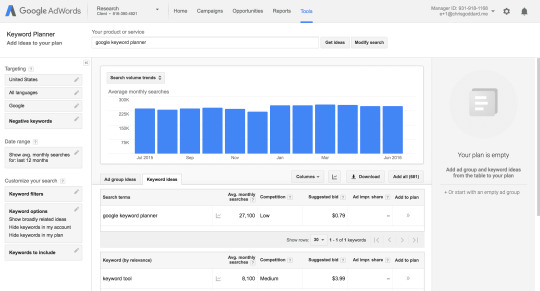#keyword: tanner
Explore tagged Tumblr posts
Note
I saw your rat it’s in the possession of the girl from district 7, I advise the use of lethal force.
Tanner from District 10
Oh, Pup Harrington's former tribute? I wonder how Max got from the District 4 boy to her?
Anyway, thanks for the information. Expect a wiring of funds soon!
#internal communications:#f: you got that right abyssalis?#a: yeah. tanner. d10. i'll send over the funds shortly#a: also don't you think that information's a bit too... forceful? couldn't the source be biased?#f: well it's the only lead we've got! so be sure to see if you can track the D7 girl#a: we've got? wait.. this is not what i signed up for#inspected: approved#in foro#interrogatis#anonymous#keyword: tanner#keyword: max ratvinstill
9 notes
·
View notes
Text
Project Sekai Idol AU
Now that our first set of MVs has been released, I think it's time we truly begin to dive into this AU :D
Their order of appearance (as in debut) is: YUME YUME JUMP!, Sunny☆Wonders, Wisteria, Fantasy Dreamers, and PASSION♡proJECT.
YUME YUME JUMP! was originally the most popular of the idol groups when it was just the first three. While each had a popular idol in them, Shizuku was ultimately the most popular and thus more people became fans of YYJ.
That being said, YUME YUME JUMP! would quickly fall in popularity when a new, all male, idol group debuted. This new all male idol group was Fantasy Dreamers.
Toya was originally set to be Fantasy Dreamers Prince Charming. However, his quieter nature made him more suited for a mysterious figure, so the Prince Charming persona ultimately fell onto Tsukasa.
The only person in PASSION♡proJECT who was excited for the opportunity to be an idol was Minori. The other three weren't all that for it, but went along just for her.
Each group has a center, someone who's almost always at the front. Those people are: An, Haruka, Airi, Tsukasa and Nene.
YYJ's management wanted Shizuku as their center. However, Shizuku pushed for An to be their center since she stood out the most between the four of them. With her darker hair and tanner skin, management eventually agreed that An did stand out the most, making her the one who'd be perfect as YYJ's front and center. And it worked. Putting An as the front person skyrocketed her popularity more and YYJ will sometimes really be pushed into that contrast look with An dressed in darker colors while everyone else wears lighter ones.
Both Sunny☆Wonders's and Wisteria's managements decided upon having the popular idol be their respective groups centers. While Mafuyu and Ena were both considered, they decided having someone already popular would boost the groups overall popularity. It worked, but not enough to be more popular than YYJ and less so when Fantasy Dreamers shot up to being the most popular group.
One of the biggest differences between Fantasy Dreamers and all the other idol groups is that they do somewhat have more of a say in what happens. Somewhat is your keyword. When it came to choosing someone who'd be at the front, it was easy for them all to choose Tsukasa. However, on the off chance someone else had to, they all agreed that Toya would be that person. Of course Tsukasa was the one chosen in the end.
When PASSION♡proJECT's management said they were making Nene their center, it wasn't done because they thought she was the best suited for it. It was solely because of her stage fright. Their idea was for their center to be someone who overcame her fears and was able to finally stand in the spotlight. Thus, being PASSION♡proJECT's center is actually very stressful for Nene because she is constantly being forced to be right in front of the group. She's the one who has to do more training so she can be their center, no matter how much the other three say they wouldn't mind being their groups center if it meant relieving Nene of that stress. But the decision was made and that's that.
#project sekai#project sekai colorful stage#hatsune miku colorful stage#proseka#prosekai#colorful stage#project sekai idol au#project sekai au#prsk idol au#prsk au#yume yume jump#fantasy dreamers#sunny☆wonders#wisteria#PASSION♡proJECT
3 notes
·
View notes
Text
The Résumé Is dying, And Artificial Intelligence (AI) Is Holding The Smoking Gun
As Thousands of Applications Flood Job Posts, 'Hiring Slop' Is Kicking Off An AI Arms Race.
— Benj Edwards | June 24, 2025

Credit: Sturti Via Getty Images
Employers are drowning in AI-generated job applications, with LinkedIn now processing 11,000 submissions per minute—a 45 percent surge from last year, according to new data reported by The New York Times.
Due to AI, the traditional hiring process has become overwhelmed with automated noise. It's the résumé equivalent of AI slop—call it "hiring slop," perhaps—that currently haunts social media and the web with sensational pictures and misleading information. The flood of ChatGPT-crafted résumés and bot-submitted applications has created an arms race between job seekers and employers, with both sides deploying increasingly sophisticated AI tools in a bot-versus-bot standoff that is quickly spiraling out of control.
The Times illustrates the scale of the problem with the story of an HR consultant named Katie Tanner, who was so inundated with over 1,200 applications for a single remote role that she had to remove the post entirely and was still sorting through the applications three months later.
In an age where ChatGPT can insert every keyword from a job description into a résumé with a simple prompt, her story is not unique. The problem began shortly after the emergence of mainstream generative AI bots in 2022, when some companies applied the technology to job applications to help overwhelmed job seekers. Now, several years later, the technology has evolved from a convenience tool to a systemic disruption of the hiring process.

Credit: Getty Images
Some candidates are now taking automation even further, paying for AI agents that autonomously find jobs and submit applications on their behalf. Recruiters report that many of the résumés look suspiciously similar, making it more difficult to identify genuinely qualified or interested candidates.
Computer tools have been assisting with creating résumés for decades, and everything from the typewriter to word processors to spellcheck and résumé templates have increased the ease of making a competent résumé. But AI has pushed the trend into overdrive. The potential to create endless output makes AI fundamentally different from its predecessors. Whereas earlier technologies helped people craft one good résumé more efficiently, AI enables candidates to generate hundreds of customized applications with minimal effort—turning what was once a time-intensive process of demonstrating interest into a numbers game that overwhelms businesses trying to find genuinely qualified applicants.
The frustration has reached a point where AI companies themselves are backing away from their own technology during the hiring process. Anthropic recently advised job seekers not to use LLMs on their applications—a striking admission from a company whose business model depends on people using AI for everything else.
The Slow, Painful Death of The Résumé
In response to the deluge, companies now deploy their own AI defenses. Chipotle's AI chatbot screening tool, nicknamed Ava Cado, has reportedly reduced hiring time by 75 percent. However, this trend from businesses has led to an arms race of escalating automation, with candidates using AI to generate interview answers while companies deploy AI to detect them—creating what amounts to machines talking to machines while humans get lost in the shuffle.
Ironically, LinkedIn has stepped into the middle of the crisis by providing even more AI, with new tools that aim to help both candidates and recruiters narrow their focus. For example, an AI agent launched late last year can write follow-up messages, conduct screening chats, suggest top applicants, and search for potential hires using natural language on the platform.
Beyond volume, fraud poses an increasing threat. In January, the Justice Department announced indictments in a scheme to place North Korean nationals in remote IT roles at US companies. Research firm Gartner says that fake identity cases are growing rapidly, with the company estimating that by 2028, about 1 in 4 job applicants could be fraudulent. And as we have previously reported, security researchers have also discovered that AI systems can hide invisible text in applications, potentially allowing candidates to game screening systems using prompt injections in ways human reviewers can't detect.

Credit: Moor Studio Via Getty Images
And that's not all. Even when AI screening tools work as intended, they exhibit similar biases to human recruiters, preferring white male names on résumés—raising legal concerns about discrimination. The European Union's AI Act already classifies hiring under its high-risk category with stringent restrictions. Although no US federal law specifically addresses AI use in hiring, general anti-discrimination laws still apply.
So perhaps résumés as a meaningful signal of candidate interest and qualification are becoming obsolete. And maybe that's OK. When anyone can generate hundreds of tailored applications with a few prompts, the document that once demonstrated effort and genuine interest in a position has devolved into noise.
Instead, the future of hiring may require abandoning the résumé altogether in favor of methods that AI can't easily replicate—live problem-solving sessions, portfolio reviews, or trial work periods, just to name a few ideas people sometimes consider (whether they are good ideas or not is beyond the scope of this piece). For now, employers and job seekers remain locked in an escalating technological arms race where machines screen the output of other machines, while the humans they're meant to serve struggle to make authentic connections in an increasingly inauthentic world.
Perhaps the endgame is robots interviewing other robots for jobs performed by robots, while humans sit on the beach drinking daiquiris and playing vintage video games. Well, one can dream.
— Benj Edwards is Ars Technica's Senior AI Reporter and Founder of the Site's Dedicated AI Beat in 2022. He's also a tech historian with almost two decades of experience. In his free time, he writes and records music, collects vintage computers, and enjoys nature. He lives in Raleigh, NC.
#Ars Technica#ArsTechnica.Com#Résumé#Artificial intelligence (AI)#Smoking Gun#'Hiring Slop'#An AI Arms Race#Benj Edwards#The Slow Painful Death of The Résumé
0 notes
Text
Tanner Mark Men's Genuine Caiman Belly Square Toe Boots Black TM208040
Premium Tanner Mark Men's Genuine Caiman Belly Square Toe Boots in Black - Ideal Botas Vaqueras para Hombre and Botas Vaqueras para Mujer - Elevate Your Western Style Today! Introducing Tanner Mark Men's Genuine Caiman Belly Square Toe Boots in Sleek Black - Model TM208040 Searching for the perfect blend of style, durability, and craftsmanship in cowboy boots? Look no further! Our Tanner Mark Men's Genuine Caiman Belly Square Toe Boots are the ultimate choice for anyone seeking high-quality Western footwear. Key Features: 🌟 Exquisite Caiman Belly Leather: Crafted with genuine Caiman belly leather, these boots exude luxury and sophistication. The distinctive texture of Caiman leather sets you apart from the crowd. 🌟 Square Toe Design: Designed for both style and comfort, our square toe boots provide ample room for your toes, ensuring a relaxed fit for long hours of wear. 🌟 Versatile Black Finish: These boots are perfect for various occasions. Whether you're hitting the ranch, going out for a night on the town, or just need a rugged pair of boots for everyday wear, the black finish complements any outfit. 🌟 Quality Craftsmanship: Tanner Mark is known for its commitment to quality. These boots are handcrafted with precision and attention to detail to ensure they meet the highest standards. Additional Keywords: 👢 Botas Vaqueras Ariat para Hombre: If you're in search of top-notch cowboy boots, Tanner Mark delivers on both style and quality. 👢 Cowboy Work Boots Near Me: Our boots are not just stylish; they're built tough for your demanding workdays. 👢 Women's Cowboy Boots Clearance Amazon: Although designed for men, these boots can be a perfect gift for the Western-loving women in your life. 👢 Carolina Cowboy Boots: Tanner Mark stands alongside renowned brands like Carolina in providing top-notch Western footwear. 👢 Black Sparkly Cowboy Boots: While our boots are not sparkly, their black finish and unique Caiman leather texture make them sparkle in their own way. 👢 Botas Vaqueras para Mujer: Women who appreciate quality and style can also consider these boots for a chic Western look. 👢 Botas Vaqueras para Hombre: Designed with men in mind, our boots combine style and functionality for the modern cowboy. Elevate your Western wardrobe with Tanner Mark Men's Genuine Caiman Belly Square Toe Boots in Black. Order yours today and experience the best in Western footwear! FAQs - Are square toe boots more comfortable than traditional pointed ones, especially when it comes to belly square toe boots? Square toe boots, such as botas vaqueras ariat para hombre, are designed with comfort in mind. They offer more room for your toes and the ball of your foot compared to traditional pointed boots. When it comes to belly square toe boots, the combination of comfort and the unique texture of Caiman leather makes them a stylish and comfortable choice for any cowboy boot enthusiast. - What are the key styling tips for wearing belly square toe boots with different outfits, from casual to formal? Caiman belly square toe boots, like the Tanner Mark Men's Genuine Caiman Belly Square Toe Boots, are incredibly versatile. You can pair them with casual jeans or dress them up with a suit. Their distinct texture adds a touch of sophistication to any outfit. Whether you're going for a rugged cowboy look or a refined Western appearance, these boots fit the bill. - Can you share your experience with Tanner Mark Men's Genuine Caiman Belly Square Toe Boots and how they compare to other Western boot options? Tanner Mark's Caiman belly square toe boots offer a unique blend of style and quality. When compared to other Western boot options like carolina cowboy boots or cowboy work boots near me, these boots stand out due to their exotic texture and comfortable square toe design. Many customers have praised their craftsmanship and durability, making them a worthwhile investment. - Are there any specific care and maintenance recommendations for preserving the distinctive texture of Caiman belly leather on square toe boots? To maintain the striking texture of Caiman belly square toe boots, follow some simple care tips. Use a specialized leather conditioner to keep the leather supple and moisturized. Regularly clean off dirt and dust with a soft brush. Avoid exposing them to extreme conditions, and store them in a cool, dry place when not in use. These care practices will help your boots, such as black sparkly cowboy boots or women's cowboy boots clearance amazon finds, retain their unique appearance for years to come. By following these suggestions, you can make the most of your stylish Caiman belly square toe boots while keeping them in excellent condition. Read the full article
#BellySquareToeBoots#blacksparklycowboyboots#botasvaquerasariatparahombre#botasvaquerasparahombre#botasvaquerasparamujer#carolinacowboyboots#cowboyworkbootsnearme#women'scowboybootsclearanceamazon
0 notes
Note
Where can I find info on princess nokia blackfishing? I thought she was Afro latina, im not saying she isn't blackfishing I just want to find more info on it
I have no idea how long ago you sent this but:
Literally if you just look at images of her you can physically see her morphing herself over the years into looking Black.
I had to research/come to the conclusions and look for this all myself. Some keywords that might help is that she used to go by themermaidgirl and wavyspice with the word tumblr on google (those were the names she went by before she switched to princess nokia.)
On her Blackfishing:
I basically found out through google after seeing what she looked like in her infamous “so juicy so fertile” Vogue video that she Blackfishes because I noticed she obviously uses tanner (Face lighter than body with different tones). I started googling her old pictures and social media names and...yeah here we are.
She deadass darkens her skin artificially, wears fake Afro wigs, and gets lip injections to make herself look Black, and is lying about being AfroPuerto Rican, she’s been lying about being Indigenous as well.
How you go from this:


To this:



Her own ex-friends have said she’s not Black and called her out for it. Actual Taino Indigenous people have repeatedly called her out for lying about being Taino.


If you look at pictures shes posted of her family literally none of them are Black. They’re more than likely white or majority white/mestize. None of them in Puerto Rico would be considered Black. None of them. Like my mother’s family is literally all very much white Puertoricans who come from white European colonialists in PR, and that side of my family look JUST LIKE the people in these pictures. She’s not ambigious mixed Black, she’s straight up Blackfishing and pretending to be Black.


She is literally mestiza/white Latina cosplaying Afro-Indigenous Latinidad. Like straight up fucking cosplaying being mixed and cosplaying being spiritual/in Afroreligions.
Like who tf sits there for instagram smoking cigars with a golden headwrap showing the viewers a Yemaya oracle card like she’s really doing something except for people who are using ATRs and shit for social media clout liiikkeeee.......She can smoke all the cigars she wants, that’s not gonna make her AfroPuertorican or Afrotaino for shit. It’s fucking embarassing.


I swear the reason she’s always going on about being mixed Afro-Indigenous is because in Latino culture, including PR culture, there’s this incorrect idea that we’re all European/African/Indigenous, therefore any Latino can claim Afrolatinidad. Obviously that’s not true. But I’ve even heard this stupid shit in progressive/activist circles.
And with ATR/ADRs and Brujeria becoming more visible and popular in recent years, why wouldn’t she jump on it to capitalize off the craze, considering that’s what made her popular? So I deadass wouldn’t be surprised if this is why she tries saying she’s Black when clearly neither she nor either sides of her family are any sort of Black Puertorican. But she’s been called out for this shit so many times, nobody can say she’s just ignorant, at this point she’s been telling people straight up lies.








She wears Afro styled wigs and then lies about it being her real hair. And people have apparently called her out before but she was adamant that its her real hair. You can tell that its not her real hair, and that her actual texture is wavy, not curly.



Those are all wigs. All 3 of them in the images. You can literally tell they’re wigs. Esp in the middle/second pic, look at those roots. You can see the braids underneath and how the curls aren’t actually connecting to her scalp. Bc those are fucking wigs. Even in the bruja video, she was wearing a fucking wig.
Why do you think she goes from a light tan, to a much darker warm almost orange shade, to a neutral medium shade, back to a super dark but more olive/green toned shade? Because that’s not what her actual color is.
Have you noticed how in a lot of photos of her, her skin is sort of patchy with random spots, or her face is super pale without makeup compared to a much darker body, her body most times being a much darker color than her hands? Why sometimes her nails look dirty?




It’s literally because she uses artificial tanners/spray tan on her skin. She’s always a different shade because it goes between being fresh and faded or she switches up the brands/colors/products she’s using.



Like look at her fucking hand compared to her face (and check out the injections) like wow:

She gets mad fucking CCs of injections into her lips to make them look fuller than they actually are. And she’s been getting it done for ages. In recent moments she’s been doing.......alot.




She’s 100% A Blackfisher like it’s fucking crazy because I didnt know that wasnt what she naturally looked like. honest to god this had me so fucked up and I’m still so fucking mad over this. I had heard people repeatedly saying she wasn’t Black and figured it out through just searching up on google. She’s absolutely fucking wild for profitting off of the idea that she’s AfropuertoRican and acting like shes supposed to be some sort of representation for us when she’s been fucking lyinggggg. Faux-spiritual and faux-Black as fuuuuuuuuuuuuuuuuuuuuuuuuuuuuuuuucckkk and making money off of it.
I even saw that she apparently tried to argue with a visibly Black woman who was calling her out, that the Black woman’s skin looked fake and orange and was probably a tan on twitter. Like. GIRL GET AWAY FROM THE MIRROR BECAUSE....
She’s fucking WILD.
#i was sooooo mad/sad when i found out#and put two and two together#like deadass fuck her#wg.personal
6K notes
·
View notes
Text
How to Find Long Tail Keywords on Google Adwords
How to Find Long Tail Keywords on Google Adwords

Is it actually tells you the projected monthly searches with no costs, so it just tells you if you’re free and you can just make a Google AdWords account with any gmail email. So you basically just go up here and you sign in make an account whatever you have to do, and you can go up to this tab up here and the tools and then you can click keyword, planner and I’ll. Bring you right here. So,…
View On WordPress
#affiliate marketing course#Affiliate marketing course review#affiliate marketing mastery#affiliate marketing mastery review#google adwords#keyword search volume#long tail keywords#long tail keywords adwords#ryan affiliate marketing course#tanner afilliate marketing course#tanner and ryan affiliate marketing course review#tanner j fox and ryan hildreth affiliate marketing mastery review
0 notes
Text
affiliate marketing programs
affiliate marketing meaning
affiliate marketing for beginners
affiliate marketing amazon
affiliate marketing jobs
affiliate marketing websites
affiliate marketing definition
affiliate marketing salary
affiliate marketing agency
affiliate marketing amazon sign up
affiliate marketing average income
affiliate marketing agreement
affiliate marketing apps
affiliate marketing and investor
affiliate marketing agreement template
affiliate marketing business
affiliate marketing books
affiliate marketing blog
affiliate marketing business model
affiliate marketing business plan
affiliate marketing beginners
affiliate marketing business names
affiliate marketing blueprint
plan b affiliate marketing
affiliate marketing companies
affiliate marketing course
affiliate marketing clickbank
affiliate marketing contract
affiliate marketing commission
affiliate marketing courses free
affiliate marketing commission rates
affiliate marketing contract template
c'est quoi affiliate marketing
affiliate marketing def
affiliate marketing disclaimer
affiliate marketing degree
affiliate marketing define
affiliate marketing description
affiliate marketing diagram
affiliate marketing dynamics
affiliate ad marketing
affiliate marketing examples
affiliate marketing explained
affiliate marketing email
affiliate marketing earnings
affiliate marketing ecommerce
affiliate marketing earn money
affiliate marketing email list
affiliate marketing etsy
affiliate e marketing
e commerce affiliate marketing
ebay affiliate marketing
e-commerce affiliate marketing business model
sto e affiliate marketing
e commerce vs affiliate marketing
affiliate marketing ebook
affiliate marketing e learning
affiliate marketing for dummies
affiliate marketing for beginners 2021
affiliate marketing for amazon
affiliate marketing free
affiliate marketing facebook
affiliate marketing funnel
affiliate marketing facebook ads
affiliate marketing google
affiliate marketing guide
affiliate marketing google ads
affiliate marketing getting started
affiliate marketing groups
affiliate marketing growth
affiliate marketing google course
affiliate marketing gaming
affiliate marketing how to start
affiliate marketing how does it work
affiliate marketing high ticket
affiliate marketing how much can you make
affiliate marketing how to make money
affiliate marketing hubspot
affiliate marketing high ticket items
affiliate marketing hacks
h&m affiliate marketing
h educate affiliate marketing
kya h affiliate marketing
does h&m have an affiliate program
affiliate marketing instagram
affiliate marketing income
affiliate marketing ideas
affiliate marketing is
affiliate marketing in spanish
affiliate marketing industry
affiliate marketing images
affiliate marketing influencers
i learn affiliate marketing
how do i affiliate marketing
how to learn affiliate marketing for beginners
how to learn affiliate marketing for free
how can i learn affiliate marketing for free
how do i become an affiliate marketer for beginners
affiliate marketing jobs online
affiliate marketing job description
affiliate marketing jobs from home
affiliate marketing jobs remote
affiliate marketing jobs no experience
affiliate marketing jobs near me
affiliate marketing jobs amazon
tanner j fox affiliate marketing
affiliate marketing keywords
affiliate marketing kpis
affiliate marketing kya hai
affiliate marketing keywords 2021
affiliate marketing kajabi
affiliate marketing kit
affiliate marketing keto
affiliate marketing keyword research
affiliate marketing links
affiliate marketing landing page
affiliate marketing legit
affiliate marketing logo
affiliate marketing link generator
affiliate marketing landing page examples
affiliate marketing llc
affiliate marketing leads
l'affiliate marketing manager
l'affiliate marketing manager stipendio
l'affiliate marketing
l'affiliate marketing manager cosa fa
l'affiliate marketing manager quanto guadagna
cos'è l'affiliate marketing
come funziona l'affiliate marketing
guadagnare con l'affiliate marketing
affiliate marketing manager
affiliate marketing manager salary
affiliate marketing make money
affiliate marketing monthly income
affiliate marketing mlm
affiliate marketing manager job description
affiliate marketing millionaire
affiliate marketing m&a
affiliate marketing niches
affiliate marketing networks
affiliate marketing niches 2021
affiliate marketing nike
affiliate marketing news
affiliate marketing name generator
affiliate marketing name ideas
affiliate marketing no website
affiliate marketing on pinterest
affiliate marketing on instagram
affiliate marketing opportunities
affiliate marketing on amazon
affiliate marketing on facebook
affiliate marketing on tiktok
affiliate marketing on youtube
affiliate marketing online
nate o'brien affiliate marketing
affiliate marketing today
dropshipping o affiliate marketing
o que é affiliate marketing
network marketing o affiliate marketing
affiliate marketing platforms
affiliate marketing programs for beginners
affiliate marketing passive income
affiliate marketing pinterest
affiliate marketing products
affiliate marketing pyramid scheme
affiliate marketing pay
y.i.e.p affiliate marketing
how to do affiliate marketing
affiliate marketing quotes
affiliate marketing questions
affiliate marketing quiz
affiliate marketing qualifications
affiliate marketing quizlet
affiliate marketing quora
affiliate marketing quotes 2021
affiliate marketing qatar
affiliate marketing q and a
q es affiliate marketing
affiliate marketing reviews
affiliate marketing real estate
affiliate marketing requirements
affiliate marketing rule
affiliate marketing resume
affiliate marketing revenue
affiliate marketing rakuten
affiliate marketing rates
r/affiliate marketing
affiliate marketing sites
affiliate marketing software
affiliate marketing scams
affiliate marketing side hustle
affiliate marketing shopify
affiliate marketing step by step
affiliate marketing strategies
is affiliate marketing legit
is affiliate marketing worth it
is affiliate marketing
is affiliate marketing a pyramid scheme
is affiliate marketing hard
is affiliate marketing profitable
is affiliate marketing worth it reddit
is affiliate marketing easy
affiliate marketing training
affiliate marketing tiktok
affiliate marketing tips
affiliate marketing target
affiliate marketing tools
affiliate marketing training courses
affiliate marketing taxes
affiliate marketing tutorial
t shirt affiliate marketing
affiliate marketing t mobile
affiliate marketing under 18
affiliate marketing using pinterest
affiliate marketing udemy
affiliate marketing ulta
affiliate marketing using facebook
affiliate marketing using instagram
affiliate marketing using google ads
affiliate marketing using tik tok
affiliate marketing u srbiji
affiliate marketing u bosni
affiliate marketing u hrvatskoj
affiliate marketing vs dropshipping
affiliate marketing vs mlm
affiliate marketing vs influencer marketing
affiliate marketing vs network marketing
affiliate marketing vs amazon fba
affiliate marketing vs digital marketing
affiliate marketing vs ecommerce
affiliate marketing videos
v commission affiliate marketing
gary v affiliate marketing
regulation v affiliate marketing
affiliate marketing vs network
affiliate marketing v česku
affiliate marketing v cesku
what is the average affiliate commission
affiliate marketing what is
affiliate marketing without a website
affiliate marketing website examples
affiliate marketing with amazon
affiliate marketing without a following
affiliate marketing with pinterest
affiliate marketing walmart
affiliate marketing w polsce
affiliate marketing ticaret
affiliate marketing xing
xiaomi affiliate marketing
#affiliate marketing#affiliateprogram#make money as an affiliate#affiliatemarketing#amazon affiliate#affiliate marketing salary#affiliate marketing for beginners#affiliate marketing companies#affiliate marketing websites#twitch affiliate#affiliate promotion#affiliate marketing meaning#affiliate money#make more money#how to make money online#make money online#make money from home#work at home#work from your phone#work from home#work from hotel#home business#money business#easy money
23 notes
·
View notes
Note
Parent au:
King meets Roman and Remus for the first time.
fyi first I use Elijah as King’s name. Anyways—
————
Patton surely meant well inviting Remus over to his place for a little dinner get together and introducing him to an old friend of his and Logan’s. He had kids Roman and Janus ages— a girl a few years older and a girl a few years younger— so he said to bring along his kid.
He doubts Patton knew what he was doing.
“Remus!”
Remus could only stare as his brother slapped him on his shoulder and brought him into a rough hug. Just as fast as it happened he pulled back and grabbed Remus by the nape of his neck with both hands.
“I should’ve known it was you Patty was talking about! Taking in a wayward lost teen! Of course!”
“Elijah,” Remus breathed out. He glances over at his 12 year old son, Roman watching in surprise. “Eli, you’re in town? With Eliza and—“
“Lily yeah!” Eli grinned. Stupid fucking grin. “Joanna is at Pa and Mari’s place.” His eyes finally caught onto Roman. “And this is…?”
“Oh! Fuck, right,” Remus slaps Eli’s hands off him and turns to Roman. He tries smiling at him, but he’s pretty sure it’s a little too shaky. He gestured widely towards him. “This is my son, Roman. Roman, this is… my older brother Elijah.”
“You said you killed your brother in the womb.” Roman said, narrowing his eyes at him.
“That was Roman, Roman,” Eli chuckles. “And he didn’t kill him in the womb, he died a few hours afterwards. Guess he named you after him, that’s sweet.”
“Eli’s my half-brother. 13 year difference.” Maybe they should just turn back around and leave. Remus and Roman see enough of their friends anyways, what’s one less night. Roman doesn’t need to know his uncle or his cousins or his aunt, he especially doesn’t need to know any stories about his grandparents or when Remus was a kid.
“You did mention having a brother when we were younger,” Oh, thank God. Patton saved him for the millionth time in their short friendship. Eli steps away from the door to let Patton come into view. He smiles at Remus and Roman, oblivious to the tension. “I thought you two looked familiar!”
“Blame that on our Papa,” Eli tuts. He claps Roman on his shoulder and pulls him into the house. Remus had to actively stop himself from pulling him back by clenching his fist, letting out a small whine. “He’s got strong genetics. Roman is almost the spitting image of him! If it wasn’t for his tanner skin, I would’ve thought I was looking at him in one of our photo albums.”
“Really?” Roman followed his uncle further into the house, Remus straggling after them, nervous to stray too far off. “Do you have any of those albums with you? Dad told me my grandparents were dead.”
“Dead? They aren’t dead?”
“I said they were dead to me. Keywords there are to and me.”
Eli leaned close to Roman’s ear. Remus tenses. “Your dad never liked our parents. He was always a bit of a problem child.”
“They kicked me out of the house?!” Eli started at Remus’ shout. All of them jumped at that. Remus pursed his lips. Eli laughed, depleting the tension in the room.
“Oh, you ran away as soon as you heard the news about Audri!” Leaning over Roman again. “That’s what our parents told me the Christmas that year. Said he ran away to be her and then she dumped him and left you with him. Lovely gal otherwise.”
"That’s a total lie,” Remus laughed. He was fighting the urge to start yelling. “Can’t believe they would lie about this shit.”
“You always accused them of lying.”
Motherfucker.
“Alright, Romy, that’s enough fun with uncle Eli,” Remus grabs his son's arm, ignoring his complaints to stay, and dragging him back to the door. “Dinner was nice, Pat, but look at the time. Roman probably has some homework and I’m thinking of getting up early tomorrow and open the shop up—“
“But— but you guys just got here?! You haven’t even talked to Logan or—”
“I talked to him two days ago, he can hold up until then.”
“But I want to talk to Uncle Eli!”
“No, no more talking with Uncle Eli,” Remus opens the door and throws a quick wave over his shoulder at everyone. “Bye bye, now!”
Remus shuts the door behind him and Roman tears himself from his grip. He turns back around and sees him fuming.
Great, now Roman has more shit to fuel his growing hatred for him. This is why he didn’t say anything about Eli. He knew this shit was going to happen. He just knew.
“Why didn’t you tell me about him? Why did you lie to me about your family?” He shouted.
Remus passed a hand over his face. “I didn’t lie technically. My twin did die and you misunderstood me when I told you about grandpa and grandma—”
“So why didn’t you mention having an older brother? And that he’s friends with Patton and Logan?”
“That I didn’t know about—“
“Why don’t you want me to have a relationship with him?!”
“Romy, I’m not talking about this right here, right now,” Remus presses the heel of his hand against his head as he hisses through his teeth, squeezing his eyes shut. “We still haven’t had any dinner; why don’t we go out to like, Wendy’s or something? You like Wendy’s.”
Roman grits his teeth and his eyes narrowed into slits. After a few moments of tense silence, he stomps his foot and lets out a frustrated shout. He storms past his dad and towards the car, slamming the passenger side door closed behind him and pouting in his seat. Remus sighed.
This was going to be a fucking terrible drive to Wendy’s.
49 notes
·
View notes
Text

I’m on my room but I’ll have a slow day. Percy, Peyton, Derek, Phelan, Phoenix (Calvin by extension), Derrick, Teddy (young mostly, but adult if I can open Max resources’ too) will be my priority of the day.I.e. my Phoebe related muses frmo Charmed and Derrick. I am also willing to write my doctor, my River etcetc. And might make a Jonny Noble character using Freddie Thorp because having changed Theo is not enough. Might, though. Might. Keyword. Because I may also add something else instead. Hit me up if you want to write. Also, Stephen is forever on the table. And so is Tanner and Henry. And possibly Eric, but surely Bellamy? (lol i feel too many muses to say slow day oh well but it’ll be slow because ih ave a week to do ARR and get the car before that >.<)
1 note
·
View note
Text
SEPARATE BUT NOT EQUAL: TOWARD A NOMOLOGICAL NET FOR MIGRANTS AND MIGRANT ENTREPRENEURSHIP Lisa Jones Christensen, Ph.D.* Department of Management Marriott School of Business 585 Tanner Building Brigham Young University Provo, UT, 84602 [email protected] 919-225-9988 Arielle Badger Newman, Ph.D. Department of Management College of Business and Economic Development 3029 Scianna Hall University of Southern Mississippi Hattiesburg, MS, 39406 [email protected] Heidi Herrick, Ph.D. Department of Entrepreneurship and Strategy David Eccles School of Business University of Utah 3387 GARFF 1645 East Campus Center Drive Salt Lake City, UT, 84112 [email protected] Paul Godfrey, Ph.D. Department of Management Marriott School of Business 590 Tanner Building Brigham Young University Provo, UT, 84602 [email protected] *Corresponding author ABSTRACT This paper considers migrants on a continuum in terms of voluntariness of departure and intended timeframe in the new location. The corresponding 2x2 framework offers a theory-driven typology with which to consider four groups: exiles, sojourners, immigrants and refugees. We apply the framework to the topic of migrant entrepreneurship, demonstrating the need for separate consideration of refugee and immigrant entrepreneurs. We propose ways in which types of capital differ between the two and discuss how differences affect entrepreneurial endeavors. The framework extends scholarship on migrant entrepreneurship, while providing a nomological net for improved theorizing for a range of migrant situations. Keywords: Construct Development and Evaluation, Economic Development, Evaluation of Current Theories, Comparative Entrepreneurship, Immigration Policy, Refugees A migrant is ‘any person who is moving or has moved across an international border or within a State away from his/her habitual place of residence, regardless of (1) the person’s legal status; (2) whether the movement is voluntary or involuntary; (3) what the causes for movement are; or (4) what the length of the stay.’ - International Organization for Migration (IOM, 2019) INTRODUCTION Migration, the movement of people across national borders for resettlement, creates business opportunities and challenges as relocated people seek or create employment. Worldwide, the population of migrants already totals more than 260 million, making “Diasporia” the fifth largest “country” in the world (Taube, Cummings & Vaaler, 2013). Given that geopolitical, environmental, and economic drivers of migration are on the rise (Zong, Batalova, & Burrows, 2019), the impact of migration on business and policy grows increasingly salient for a range of scholars (Choudhury, Hernandez, Kulchina, & Wang, 2019; Deeds, Barnard, & Vaaler, 2018). One particular business and policy response to the topic of migration encourages entrepreneurship on the part of relocated individuals (Baran, 2018; Brown & Scribner, 2014; Desiderio, 2014). The driving logic suggests entrepreneurship facilitates self-employment, new business creation, and economic growth (Acs, Estrin, Mickiewicz & Szerb, 2018; Bjornskov, & Foss, 2016) and that it provides a vehicle to connect, assimilate, and achieve financial independence (Brown & Scribner, 2014; Fong et al., 2007; Gold, 1992; Kloosterman, Van Der Leun & Rath, 1998, 1999). Accordingly, many countries endorse policies encouraging entrepreneurship among migrant groups (Brown & Scribner, 2014; Wauters & Lambrecht, 2005, 2007, 2008; UNHCR, 2018). In keeping with this claim, a key United Nations (UN) agency recently declared that entrepreneurship offers an effective approach to overcoming challenges of economic and social inclusion for migrants worldwide (UNTAD, 2018). However, much of the extant International Business (IB) and policy research associated with migration conflates different groups of migrants—effectively treating many different groups, such as refugees and immigrants, as theoretically and practically equivalent (Bizri, 2017; Cortes, 2004; Gold, 1992; Heilbrunn, Freiling, Harima, 2019; Kloosterman, Van Der Leun & Rath, 1998, 1999; Portes, 1995; UNHCR, 2018; Wauters & Lambrecht, 2008). Such conflation implies equivalence in institutional and individual responses, which may or may not be theoretically sound or practically effective. Scholars, many of them outside of management, argue for the relevance of important differences by subgroup—differences related to motivation for departure, intent to stay in new locations, access to resources, legal status, or likelihood of exposure to trauma, among others (Berry & Sam, 1996; Edwards, 2015; George, 2010; Khoury & Prasad, 2016). Within the IB and management fields, scholars argue that ignoring key differences leads to substandard financial and social outcomes for individuals and society—particularly in relation to entrepreneurship (Heilbrunn et al., 2019; Wauters & Lambrecht, 2006; 2008). Herein, we address the topic of theoretical and policy-related concerns associated with conflating groups of migrants. We draw from diverse fields to: 1) clarify key definitions-in-use and 2) provide a theory-driven framework with which to (re)consider four particular groups of migrants. Specifically, we adapt theories from acculturation psychology and refugee theory to suggest categorizing individuals in terms of the voluntariness of contact and planned time horizon in the new location. Considering both voluntariness and time horizon at the time a migrant arrives in a new location distinguishes four groups: 1) exiles, 2) sojourners, 3) refugees, and 4) immigrants. The typology invites a closer exploration of definitions currently in use in myriad disciplines while also lending itself to application in specific disciplines. We illustrate one way to use the typology by applying it to the topic of migrant entrepreneurship and bringing it to bear on extant discussions regarding entrepreneurial resources (Baker & Nelson, 2005; Bhave, 1994; Godfrey, 2014; Kloosterman, 2010; Moroz & Hindle, 2011; Lanivich, 2015). In so doing, we identify similarities and differences in human, physical, institutional, and social capital between the groups (and between refugees and immigrants) and we propose how such resource differences affect two types of entrepreneurial efforts. We then argue that refugees and immigrants, in particular, merit materially different organizational and policy responses in terms of entrepreneurship. The typology and the categorical definitions offer a theoretical framework for considering four types of migrant groups, and it specifies linkages among and between them and the resources they may or may not share. Thus, in its final iteration, it offers the beginnings of a nomological net for scholars interested in the intersection of migration and entrepreneurship (Cronbach & Meehl, 1955). The paper proceeds as follows: first, we outline key drivers of migration and discuss the effects of migration on business and management topics. We then introduce the typology and use it to compare immigrants and refugees in terms of how resource differences might affect entrepreneurship. We close with a discussion of policy implications and opportunities for future research. BACKGROUND: MIGRATION CONTEXT AND DRIVERS Worldwide, the number of migrants grew 200% in the last 50 years—rising from 79 million in 1960 to 260 million in 2017 (Castelli, 2018; Connor, 2016). Moreover, in 2016, more than 1 in every 122 people fled homes as refugees because of persecution, war, or violence (UNHCR, 2018). The drivers of worldwide migration come from a range of sources, such as rising natural and man-made disasters. Other drivers relate to improved access to and means of travel (People and the Planet, 2019), widening socioeconomic differences between low- and high-income countries, diasporic links made stronger through social media, and trends toward urbanization (Castelli, 2018; Berry & Sam, 2016; Connor, 2016). The above list describes a mix of country-, local-, and individual-level pressures affecting the decision to migrate; most of these likely interact to drive the decision to relocate (Niedomysl, 2011). Such drivers, and the geopolitical, personal, and environmental pressures they describe, combine to make migration “a structural phenomenon likely to continue in the next decades” (Castelli, 2018: 6) and “one of the defining issues of our time” (Choudhury, Hernandez, Kulchina, & Wang, 2019:1). Such migration directly affects international and local business, as it concerns the mobility of labor, knowledge, and capital (Choudhury, Hernandez, Kulchina, & Wang, 2019). Migration creates management opportunities and challenges when an influx of transplanted people seek or create employment in new locations. Research suggests that migrants enable knowledge diffusion, innovation, and cross-border information and capital flows (Martinez, Cummings, & Vaaler, 2015, Bahar & Rapoport, 2018). Further, the arrival of migrants can change employment and wage patterns of native workers (Peri & Sparber, 2009); migrants may also create clusters of knowledge and entrepreneurship (Kerr, 2008; 2019). Data suggests that migrants are twice as likely to become entrepreneurs as native-born individuals (Kauffman, 2018). Migration has mixed effects on organizational founding, expansion, innovation, and cross-border financial exchanges (Leblang, 2010; Lissoni, 2018; Naudé, Siegel & Marchand, 2017). Such findings, however, frequently draw from aggregated populations of potentially different migrants (Sandberg, Immonen, & Kok, 2018, UNCTD, 2018; Wauters & Lambrecht, 2008). Such a conflation may be a relevant practice for some research questions, while in other cases it may warrant revision. Certainly, some management scholars call for careful consideration of how different migrants may or may not relate to different business outcomes—particularly in the context of entrepreneurship (Wauters & Lambrecht, 2006, 2007, 2008; Miller, Steier, & Le Breton-Miller, 2016). One way to take such care involves taking a cross-disciplinary perspective and revisiting the nomological net surrounding migration (Cronbach & Meehl, 1955). Doing so can improve the specificity of research and policy and therefore the clarity and efficacy of ensuing recommendations. Below, we attempt such specificity by examining and adapting principles and distinctions from outside of the management domain. Key Distinctions in Migration: Reasons for Departure and Time Horizon in New Country We first introduce and draw from principles from acculturation psychology, due to its explicit focus on the post-migration experience of individuals and groups (experiences of both those who migrate and those who live in the new location and thus surround the new migrant). Such psychologists seek to understand acculturation, or the “effects on all parties when groups of individuals having different cultures come into continuous first-hand contact” (Redfield et al., 1936: 149; Berry & Sam, 2016). Specifically, the work of psychologists Berry (2009) and colleagues (2016) considers migration, and migrating individuals, in terms of at least two dimensions: 1) the voluntariness of contact with the new location (from involuntary to voluntary) and 2) planned time horizon in the new location (from temporary to permanent). Their work assumes that people vary along a low-to-high continuum on both dimensions, which results in a 2x2 framing that generates four categories of people (see Figure 1). The resulting framework includes those in a new place involuntarily with a temporary mindset; those in a new place involuntarily with a more permanent mindset; those who are in a new place voluntarily with a temporary mindset and those who are in a new place voluntarily with a relatively permanent mindset. As Figure 1 indicates, we argue that applying extant definitions of migrant groups to these categories suggests that exiles, refugees, immigrants, and sojourners occupy separate quadrants. The value of, and justification for, such a typology in the field of psychology comes from the fact that it helps with diagnostic and analytical responses to migrants. Acculturation psychologists use a version of this framework to explore individual differences in post-migration affect, behavior, and cognition for migrants in each category. The separate categories enable more customized and efficacious interventions. Adapting the framework and applying it to different management questions provides a starting point for: 1) refining common category labels; 2) discussing similarities and differences among migrants in each category; and 3) analyzing subgroup characteristics more carefully. We attempt each below. ----------------------------------------Insert Figure 1 about here-------------------------------------------------------- PART I: EXPLORING CATEGORY DEFINITIONS AND BUILDING A FRAMEWORK Explicating the framework in Figure 1 requires first assessing how long a person intends to stay in the new country and the voluntary or involuntary nature of the decision to relocate. For our purposes, the information required to categorize an individual comes from his or her initial statements of reason(s) for departure and intent to stay; it stems from the types of statements people provide upon arrival in the new country. Such claims may emerge from individual conversations with migrating peers and welcoming bodies, or be part of formal statements provided to a border official or other organizational agent. This focus on initial claims has roots in practical reality—most policies (or organizational sorting) related to migrants takes effect based upon migrants’ own declarations upon arrival (Brown & Scribner, 2014; IRC, 2019; UNHCR, 2018). Immediately after, differences in these original statements trigger different policy and organizational responses. Certainly, while reasons and plans of any migrant remain idiosyncratic, most reasons and plans relate to time horizon and volition, respectively. In exploring all four quadrants, for pragmatic reasons we start with a temporal perspective (short- to long-term) in terms of intent to stay in the new location. Thus, we focus first on the two categories involving individuals who intend to stay for a shorter time. Two categories of migrants fall under this “temporary” category—those who are in a new place involuntarily and those who made the decision to move at will. For them we use the terms “exiles” and “sojourners,” respectively. Migrants with Temporary Time Horizons upon Arrival: Exiles and Sojourners Defining exiles. In considering people with a temporary time horizon who leave the country of origin involuntarily, acculturation psychologists label asylum seekers as representative of this category. Asylum seekers are forced to relocate (this relocation is thus highly involuntary), and asylum seekers formally request sanctuary in another country. In Figure 1, we deviate from this phrasing and widen the category by using the term “exiles” for this category. Exiles also leave a home country involuntarily and live “in a state of forced absence from one’s country or home” (Merriam-Webster, 2019), but the term “exile” does not restrict membership to those who formally apply for sanctuary or asylum. Exiles, which include asylum seekers, thus represent people living with the most extreme case of time uncertainty (Horst & Grabska, 2015) or in “indefinite stasis” (Griffiths, 2014), as exiles do not know whether they ever will be able to return home or attain asylum. They also embody the extreme case of involuntary relocation, as they were forced out while (by definition) still wanting to stay. Thus, exiles are unlikely or unable to adopt a longer-term mindset in the new location during the waiting period (Brun, 2015; Brun & Fabos, 2015; Griffiths, 2014). In fact, a short-term mindset remains a defining feature of exile/asylum-seeker status (Brun, 2015; 2016; Rieff, 2013). Rieff (2013) studied several groups of exiles, including Jews, Armenians, White Russians, and Cubans, and notes that common among them was the ongoing and persistent idea that they would be going home in a few months. Even after being in the new location for years, the mindset remained that the time in the new country was a “temporary” visit. Short-termism for members of this quadrant occurs in terms of policy as well. For example, exiles and asylum seekers who arrive in the United States can apply for a work permit after one year, but they cannot obtain other social services offered to other migrants (Nunez, 2018). Other developed nations have similar policies (Collins, 2003). Importantly, this group of exiles is not small, as at the end of 2017, there were approximately 3.1 million people worldwide waiting for a decision on asylum claims alone (UNCHR, 2019). By extension, the number of exiles is larger, as it includes these people and others not seeking formal sanctuary. Defining sojourners. Further consideration of the next category of migrants with temporary time horizons means discussing migrants who relocate with relative volition and agency (particularly in comparison to that of exiles). The typology in Figure 1 describes members of this category as “sojourners.” Scholars Safdar & Berno (2016: 173) define sojourners as “people who travel internationally to achieve a particular goal with the expectation that they will return to their country of origin when they achieve that purpose.” Examples of sojourners include: temporary workers, volunteers, missionaries, tourists, diplomats, expatriate employees, visiting scholars, nomads, among others. (Safdar & Berno, 2016; Deeds, Barnard & Vaaler, 2018). We acknowledge that this label still includes significant heterogeneity in terms of the people and situations of different “sojourners.” For example, consider the obvious differences between a prototypical migrant farm workers and an executive on temporary international assignment—two types of migrants categorized in the framework as sojourners. However, the value of the category label derives from the commonality it captures: sojourners plan for temporary visits and have some ability and freedom to return regardless of cost or convenience or ease. Relative numbers and statistics for the size of this category are not tracked by any single agency, but data can be pieced together. For example, data suggests that 970 million temporary international volunteers existed worldwide in 2017 (UN Volunteers, 2018) and that there are 50 million expatriate employee on temporary international assignment (Finaccord, 2018). Migrants with [Comparatively] Permanent Time Horizons: Refugees and Immigrants In moving across the typology, another two types of migrants fall under the more permanent classification in terms of time horizon in the new country—those who are in a new place involuntarily and those who made the decision to move at will. In considering the involuntary relocations first, we discuss refugees. Defining “refugee”. “The term refugee has analytical usefulness not as a label for a special, generalizable “kind” or “type” of person or situation, but only as a broad legal or descriptive rubric that includes within it a world of socio-economic statuses, personal histories, and psychological or spiritual situations” (Malkki, 1995: 496 quoted in Black, 2001) A majority of scholars and practitioners, when considering refugees, revert to the policy-focused definition established in the 1951 Geneva Convention of the UN. This definition sets the international definition of a refugee as a person who: “…owing to a well-founded fear of being persecuted for reasons of race, religion, nationality, membership of a particular social group or political opinion, this person is outside the country of his nationality and is unable or, owing to such fear, is unwilling to avail himself of the protection of that country; or who, not having a nationality and being outside the country of his former habitual residence as a result of such events, is unable or, owing to such fear, is unwilling to return to it.” (UNHCR, 2018) The United Nations High Commission on Refugees (UNHCR) amended the original definition in 2011 by adding the following, widening the refugee definition to include threats to life or freedom: “refugees are those persons who are outside their country of nationality or habitual residence and unable to return there owing to serious and indiscriminate threats to life, physical integrity or freedom resulting from generalized violence or events seriously disturbing public order.” (UNHCR, 2011: 19). Building on the ideas in the first quote from Malkki (1995) and Black (2001), both policy-focused definitions remain too narrow for many (see Black, 2001, De Genova, 2002; 2013; and Zetter, 2007 for summaries of this debate). In fact, much post-Convention scholarship on refugees adopts a broader interpretation of the term. For example, some interpretations purposefully include other involuntary forced migrants such as: humanitarian refugees (where war or lack of food or water create crisis) (Hailbronner, 1988); stateless persons (where policy changes render people homeless) (Black, 2001); economic refugees (those forced to migrate because of poverty, underdevelopment, or social exclusion) (Richmond, 1993); and environmental refugees (where people flee because crops fail or water levels rise to render livelihoods extinct) (Myers & Kent, 1995). Clearly, the most formal or frequently cited definition of “refugee” (as a person with formal legal status from a UNHCR-granting organization) also offers the narrowest description of people experiencing permanent involuntary forced displacement. Accordingly, we argue for definitions that capture more nuance and brings more clarity to the topic of refugee than do those drawn from the Geneva Convention of 1951. A further justification to widen the definition of “refugee” stems from elements of refugee theory (Kunz, 1973, 1981), which considers a wide range of refugee motivations irrespective of legal status. Kunz (1973) suggests that the flight and settlement patterns of refugees require considering two additional factors: anticipatory and acute refugee movement. As the names imply, the theory posits that refugees who, according the Table 1, have involuntary reasons for departure may still vary in terms of the amount of choice and time that precede flight or relocation. Acute refugee movements arise from political changes, army movements or other dramatic “push” factors in the home country and they correspond to common perception of forced migration embodied in the 1951 definition. By contrast, anticipatory refugees leave their home country before being literally forced (which some would say makes them immigrants (see next section))—and prior to this theorizing some scholars would consider them as outside of the definition of refugee. Kunz argues they remain refugees. Certainly, individuals in these circumstances may seem like voluntary immigrants, the distinction lies in the fact that anticipatory refugees perceive danger and feel forced to make a choice to leave, and they face danger and limited availability of a relocation options. These situational factors dramatically demarcate the available choices of anticipatory migrants, such that full agentic expression of where and when to go do not drive movements. Thus, for proponents of refugee theory, both types remain in the “refugee” category because the reality and choice set of both resembles that of people who flee involuntarily (Kunz, 1973). These arguments from refugee theory serve to enrich and strengthen the definition of refugee that we put forward below. They also provide support for a typology such as the one in Figure 1, in large part because they elaborate on and account for motives and variance in the refugee category. Another important feature of refugee theory is that it remains unconcerned about legal status or formal designation in a host country. This inclusiveness functions as an invitation and a caution for management scholars and policy-makers. It invites both to avoid narrow legalistic and policy-centric definitions that can leave out many types of refugees. We accept this invitation and posit that individuals who flee their country of origin from involuntary pressures and with low choices and little preparation—but who fall outside of the policy definition offered by the UNHCR—still qualify as ‘refugees’ by wider considerations. Thus, they may need at least the same policies and treatment as any formally designated UNHCR-designated refugee (UNHCR, 2018; Zetter, 2007). Given our wider definition, we suggest that the number of people in this category far exceeds 30 million worldwide. We conclude this from the fact that in 2018 there were at least 20.9 million refugees under UNHCR mandate as well as 5.5 million Palestinian refugees (UNHCR Figures at a Glance, 2019). Thus, the number of people potentially associated with this quadrant remains higher—as the above numbers relate only to those holding more formal refugee status. Defining “Immigrant”. Again starting with current definitions-in-use, an immigrant is “an individual who moves into a country for the purpose of settlement” (UN IOM, 2015). An immigrant typically comes to live permanently in a foreign country; most immigrants work to become lawful permanent residents and eventually citizens (IRC, 2019). A key feature of immigration stems from the voluntary nature of the move; immigrants tend to move by choice, commonly in response to “pull” factors such as economic opportunity, job offers in the new location, or family, and friends who already live in the new location (Bernard, 1976; Berry & Sam, 2016; IOM, 2015; UN 2018). Immigrants (legal or illegal) typically leave home countries in pursuit of better opportunities, meaning they move towards something in hopes of bettering circumstances (Edwards, 2015; IOM, 2015; UN 2018). The voluntary nature of the move means that immigrants can freely contact family and friends in the country of origin and presumably, they can return at any time for any duration. This option to return home (even if expensive to do so) stands in marked contrast to the aforementioned situation of refugees, who cannot do so without threat to their security and that of family members or friends (Bernard, 1976; UN 2018). As illustrated in Tables 1 and 2, refugees may endanger themselves and others with even attempted contact with home country connections (IRC, 2019). Other key features of both the immigrant and refugee category stand out in part because of the ways they complement and contrast each other. Tables 1 and 2 outline some of these similarities and differences, particularly in terms of educational attainment, health, and social service utilization. ----------------------- Insert Tables 1 and 2 about here ----------------------------------------- Data about the absolute size of the “immigrant” category stems from an International Migration Report (IOM, 2017) which suggests that in the United States alone, 45 million immigrants and approximately 11 million unauthorized immigrants reside. It also suggests that the number of international migrants worldwide reached 260 million (IOM, 2017). PART II: APPLYING THE FRAMEWORK TO MIGRANT ENTREPRENEURSHIP Thus far, we have built out an organizing framework that distinguishes exiles, sojourners, refugees, and immigrants. The framework expands the discussion of refugees beyond narrow legalistic and policy-centric definitions. It also invites migration scholars from many disciplines to clarify definitions and make finer-grained investigations into the various categories of migrants. We address this call and apply the framework to the topic of migrant entrepreneurship. We define entrepreneurship as “self-employment in commercial business” (Light & Dana, 2013: 603) and assume the entrepreneurial act stems from individuals recognizing, developing, and managing resources (Bhave, 1994; Godfrey, 2014; Moroz & Hindle, 2011; Lanivich, 2015). This focus on resource management fits with the United Nations definition of entrepreneurship as “the capacity and willingness to: undertake conception, organization and management of a productive new venture, accepting all attendant risks and seeking profit as a reward” (UNCTAD, Policy Guide: iv). This definition is used frequently in discussing policies and frameworks for refugees and immigrants (UNCTAD, 2018). Interestingly, within the field of entrepreneurship, scholars have begun to argue that some research and policy inappropriately conflates refugees and immigrants (Heilbrunn et al., 2019; UNHCR, 2018; Wauters & Lambrecht, 2008). Using the framework described in Part I above enables a theory-driven approach to this question. In applying the framework, the entrepreneurship focus forces attention to stay on two of the four migrant groups. It forces attention to those migrants with a permanent temporal focus in new locations, in part because ventures need time to develop (or not), as well as time to grow and mature (or fail). This temporal emphasis has a long history in the process view of entrepreneurship (Moroz & Hindle, 2011; Wadhwani & Jones, 2014) and moves attention to the only groups categorized in the framework with a relatively permanent mindset in the new location: immigrants and refugees. In linking the above entrepreneurship definition with definitions in the framework, a formal definition of a refugee entrepreneur emerges as: a person who has involuntarily fled his or her home country, who plans for permanence in the new country of residence, and who engages in self-employment in a profit-seeking venture in the country of destination. Similarly, a definition of immigrant entrepreneur emerges as: “a person who has voluntarily fled his or her home country, who plans for permanent residency in the new country, and who engages in self-employment in a profit-seeking venture in the country of destination.” With the key distinction being the voluntariness or involuntariness of their departure. The idea that refugee or immigrant entrepreneurship depends on individuals recognizing, developing, and managing resources (Baker & Nelson, 2005; Bhave, 1994; Godfrey, 2014; Moroz & Hindle, 2011; Lanivich, 2015) requires exploring what resources exist and whether and how entrepreneurs, or would-be entrepreneurs, access and arrange them (Baker & Nelson, 2005; Sarasvathy, 2001). Herein, we illustrate how using the framework presented earlier can guide such an exploration. ENTREPRENEURIAL RESOURCES In order to explore how refugees and immigrants may differ in terms of access to and configuration of resources, we draw from Godfrey (2014) to suggest key resources to consider. Godfrey (2014) argues that different types of capital resources surround (or potentially surround) entrepreneurs; the types of capital include institutional, social, human, and physical resources. Accordingly, we discuss each type in turn before offering propositions about how resource access and deployment might differ between immigrants and refugees. Resource Differences for Refugees and Immigrants: Institutional Capital At the broadest level, institutions such as churches, universities, courts, and industry organizations structure political, economic, and social interactions between humans (North, 1990). Formal institutions, such as government agencies, create explicit rules, laws, policies, and regulations about how to conduct business. They also govern how to obtain goods and services, and how to comport in society. Informal institutions, such as societal values, beliefs, cultures, and customary practices, transfer implicit information about the norms, customs, and taboos that govern human interactions in communities (North, 1990; Scott, 2014). Both formal and informal institutions form the context for business creation and operation—they describe the macro environment and state of the market (Kloosterman & Rath, 2001). The “capital” associated with formal and informal institutions relates to how well people can identify which institutions matter; which ones have power; and how to navigate entry and acceptance from powerful institutions (Eggenhofer-Rehart et al., 2018; Godfrey, 2014). Of course, the institutional arrangements and cultural context of every country and region vary significantly (Mair & Marti, 2009; Khanna & Palepu, 2005), and thus the way institutional capital works within and between each also varies (Godfrey, 2014). Migration moves in all directions within these institutional environments (meaning North-North, North-South, and South-South, and South-North), which means that both immigrants and refugees can face differences in institutional capital depending on what type of move they make. Below we explore how differences between refugees and immigrants might cause relationships with institutional capital to also be different by category. Institutional capital and immigrants. Research suggests that most immigrants re-settle in ethnic communities in their new country (Bemak & Chung, 2014), which means that immigrants are more likely to be able to find people from their own home country with which to associate and learn from. In addition, data suggests that immigrants who relocate near similar others have opportunities to join other immigrants in creating ventures (Kaufmann, 2018) and they can more easily identify other immigrants as role models (Arora, 2019). Data from the United States supports this and suggests some positive externalities that may arise from this association. Research indicates that immigrants account for 47% of all U.S. scientists with doctoral degrees, 25% of college students seeking degrees in engineering and science, and 25% of physicians (Bemak & Chung, 2014). Importantly, research links some of this innovation to the associations between similar immigrant groups (Kauffman, 2018). These data suggest that many immigrants have access to similar others who show them how to navigate the institutional environment around education, worship, joining social organizations, etc., among other things. This type of support is less likely to be present for refugees, as explained below. Institutional capital and refugees. In contrast, we know that formal refugees (those who conform to the UNHCR definition) do not have much choice in where they relocate; they are sent to locations by assignment and not because of preference, or concentration of similar others (IRC, 2019). This means that some refugees are placed in, or relocated to, places where they do not know and cannot find similar others or similar institutional arrangements. While we have established that refugees move myriad directions, data suggests that recent waves of refugees include a majority who flee states with corrupt or incomplete formal institutions in developing or war-torn nations (Esses, Hamilton & Gaucher, 2017). As such, these subsets of refugees may not have previous experience with functioning formal state institutions and other vagaries of an unfamiliar institutional environment. Regardless of the level of development in the country of origin, the fact that some refugees cannot self-select where they live implies that many cannot easily locate in places similar to a previous life. The difficulties that these refugees face due to their lack of institutional knowledge (or simply due to an institutional mismatch) creates a unique challenge for some refugee entrepreneurs (Eggenhofer-Rehart et al., 2018). In considering the mobility and networks of refugees and immigrants together (particularly those moving to an opposite institutional environment (Eggenhofer-Rehart et al., 2018)), we argue that in the aggregate, refugees will have more difficulty finding, living near, and learning from similar others to help them navigate the new environment. Accordingly, we propose: Proposition 1A: As compared to new immigrant entrepreneurs, new refugee entrepreneurs have more difficulty navigating the institutional environment in a new country. Recall that the majority of immigrants choose and plan for relocation and may come from relatively similar backgrounds to the places to which they choose to relocate. This potential for similarity means that more immigrants than refugees may share familiarity with class structure, social norms, and in particular, key institutions—from libraries and golf courses to courts and universities (Esses, Hamilton & Gaucher, 2017). Data suggests that refugees have more difficulty than immigrants in converting institutional capital into career capital when home country institutional norms differed significantly (in any direction) from host country norms. Here, a key element of the argument we build rests on a full exploration of the similarities and differences between home and host country—for both refugees and immigrants. Accordingly, we suggest consideration of both arrival timing and home and host country institutional arrangements when making comparisons between refugees and immigrants: Proposition 1B: Assuming similar arrival timing, new immigrants likely acquire institutional capital more quickly than will new refugees after arriving in a new location; this relationship will be stronger when the difference between home and host country institutional contexts is greater. Resource Differences for Refugees and Immigrants: Social Capital Social capital refers to an individual’s web of interpersonal relationships that influence behavior—including entrepreneurial behavior—and thereby social capital affects business growth (Adler & Kwon, 2002). Social capital derives from the web of associations that connect individuals with each other (Burt, 2005; Granovetter, 1973; 1985). A personal combination of ties constitutes an entrepreneur’s social network, and the capabilities and resources within the network constitute her social capital. While prior research indicates networks as essential to the formation and exploitation of new entrepreneurial ventures, in most conversations about entrepreneurship, the existence of these network ties is taken as given (i.e. there is an assumption that every individual has access to his or her network, and that every individual knows many people who can help them). Thus, the majority of existing research on the role of networks emphasizes 1) how entrepreneurs leverage existing and accessible relationships with family and friends to access resources to form a venture—the strength of strong ties—(Coleman, 1990; Larson & Starr, 1993; Walker, Kogut, & Shan, 1997); or 2) it emphasizes how spanning structural holes in accessible networks allows entrepreneurs to access new knowledge and non-redundant resources to exploit a new venture—(Burt, 1992; Burt, 1997; Portes & Sensenbrenner, 1993; Woolcock, 1998). The existence, or lack thereof, of network ties available to entrepreneurs drives differences in how they draw on social networks to enroll the resources they need to successfully form and exploit an opportunity (Burns, Barney, Angus, & Herrick, 2016). Social capital and immigrant entrepreneurs. Prior research suggests that, once in a new location, immigrant entrepreneurs typically rely on the social capital of ethnic networks or family relations to secure critical resources necessary to form and exploit a new venture (Bonacich & Modell, 1980; Kalnins & Chung, 2006; Light & Paden, 1973; Palloni, et al., 2001; Portes, Guarnizo & Haller, 2002; Portes & Sensenbrenner, 1993). In particular, newly arrived immigrants with few resources of their own receive assistance from other more established individuals in their ethnic network (Kalnins & Chung, 2006). This assistance is typically contingent upon geographic location and ethnic, regional, or religious group membership (Hurh & Kim, 1984; Kalnins & Chung, 2006; Kim, Warner & Kwon, 2001; Park & Buechner, 1997). For example, Portes and Sensenbrenner (1993) show how loans or rotating credit are readily made available to Cuban and Dominican entrepreneurs by members of their ethnic community. In many cases, these funds may be distributed without any expectation of repayment because of a sense of shared values and trust (Kalnins & Chung, 2006; Portes and Sensenbrenner, 2003). Likewise, loans are consistently paid back in full without any collateral or signed formal agreement (Kalnins & Chung, 2006). Portes and Sensenbrenner (1993) suggest this repayment is primarily due to group members fear of reputation loss and reprisal from the community (Kalnins & Chung, 2006). Similarly, Lee et al. (2013) notes that membership in various ethnic organizations provides members an opportunity to gather together with other co-ethnic immigrants and exchange information, share resources, and coordinate joint actions. These interactions generate unique forms of social capital in immigrant communities (Lee et al., 2013; Portes & Sensenbrenner, 1993), which in turn provide a greater number of opportunities for entrepreneurship guidance, support, and funding within the community (Portes & Jensen, 1987; Portes & Stepick, 1985). The situation for refugees is likely different than the immigrant experience. Social capital and refugee entrepreneurs. New refugee entrepreneurs, similar to immigrant entrepreneurs, can be severely resource constrained at startup. However, in addition to the potential language barriers and cultural differences for refugees (which may not exist for immigrants who can choose new locations based on language mastery and other skills), refugees oftentimes have few, if any, family, friends, or social networks in the new location on which to rely for assistance and they likely have less physical capital with which to help procure a new network (Sequeira & Rasheed, 2006; Sandberg et al., 2018). By contrast, immigrant entrepreneurs’ tendency to pre-plan to find, and affiliate with others of their same ethnicity creates a greater possibility of finding a community of buyers, sellers, laborers, employers & financiers—as well as a tightly knit network of information exchange (Portes & Zhou, 1992; Eggenhofer-Rehart et al., 2018). Refugee entrepreneurs are less likely to have access to these same markets (e.g. licenses, permits), skills and training (e.g. apprenticeships, co-ethnic employees), or financing (e.g. co-ethnic investors, loans from kin) (Bizri, 2017; Eggenhofer-Rehart et al., 2018). In light of these comparisons, we propose: Proposition 2: As compared to new immigrant entrepreneurs, new refugee entrepreneurs will have more difficulty initially accruing and drawing upon social capital in the new country. Resource Differences for Refugees and Immigrants: Human Capital Human capital refers to the resources embedded in people. The term usually refers to an individual’s language skills, education, and training, as well as to differences in ability, attitudes, and outlook (Becker, 1964). People tend to have general, specific, and even hidden human capital, or people have basic and specialized skills, as well as relatively hidden internal skills such as knowledge. General human capital includes skills and knowledge used to perform activities like literacy and numeracy. In most societies, the ability to read, write, and do calculations enables people to perform a variety of value-creating functions—but such skills do not differentiate people when the majority of others have the same skills (Godfrey, 2014). Specific human capital refers to specialized and localized knowledge or skills—from playing the piano to performing eye surgery (Godfrey, 2014)—and specialized skills enable people to create value when the skills are rare and valuable and demand exceeds supply (Barney, 1991). Hidden human capital refers to attitudes and beliefs versus cognitive and mechanical skills—it refers to such things as the knowledge about how to address people from different backgrounds, or to an awareness of how attitudes and norms vary by social class (Godfrey, 2014; Eggenhofer-Rehart et al., 2018). Human capital and immigrants. Levels of, and access to, human capital can vary significantly for any group because both may depend on the country of origin and the opportunities therein, as well as on the timing of emigration. At first, it may appear that immigrants do not face the same challenge of transferability of human capital as do refugees, primarily because immigrants can choose where to emigrate. They may choose a destination where their formal training may benefit them. However, this is not always the case and many immigrants may still face a problem of transferability—problems any international transplant faces given different language skills and different training and educational backgrounds (Bakker, Dagevos, & Engbersen, 2017; Eggenhofer-Rehart et al., 2018). For example, many licenses and trainings are devalued or do not transfer between countries, regardless of migrant status. Human capital and refugees. For refugees, levels and access to human capital may depend on when refugees fled their country of origin (and human capital correlates to financial capital) (Duany, 2017). Data on historical trends in migration suggests that refugees who flee earlier due to the onset of turmoil, violence and so forth, typically have higher levels of human capital than those who flee later. The logic for this being that wealthier and more educated members of society have more resources to learn of pending trouble and to respond to unexpected push factors by departing; they likely also have human capital qualifications that more closely match those required in the new locations (Duany, 2017). For example, in Cuba the “Golden Exile” period from 1965-1973 describes the first wave of refugees from Cuba to the United States. It was predominantly comprised of Cubans from middle and upper class society with high levels of human capital—such as doctors, lawyers, engineers from large cities who had the money and connections to flee early (Duany, 2017). The next wave of exodus, the “Freedom Flights,” were comprised of skilled, semi-skilled, and small business owners. After that, most Cuban refugees were from rural areas and had low skill levels, and low amounts of general human capital (Duany, 2017). This data on exits from Cuba provides just one example that demonstrates how timing of when refugees flee countries of origin relates to levels of, and subsequent access to, human capital as well as physical capital. Another variant in human capital levels among refugees relates to where they spent time before relocation, leaving either directly from a former home or from a rural isolated refugee camp or urban refugee setting, and the longevity of the stay in the camps. The situation may differ for urban refugees who are more integrated into the city of destination as they await status in an urban environment where they are more likely to be able to access education and other services. Refugees in isolated rural camps outside of urban areas oftentimes lack the opportunities to develop and or increase levels of human capital. Further, human capital can degrade with long delays in use, practice, or upgrades (Eggenhofer-Rehart et al., 2018). Essentially, opportunities within the country of origin and applicability of licenses and other human capital stocks can affect refugees and immigrants in similar ways. That said, issues related to the timing of departure from the country of origin and whether (and for how long) or not a refugee stayed in a refugee camp both affect refugees differently. Accordingly, we suggest the following: Proposition 3A: Assuming that language skills are equal, new immigrant entrepreneurs and earlier waves of refugee entrepreneurs will have similar levels of difficulty (or ease) navigating the human capital environment in a new country. Proposition 3B: Assuming that language skills are equal, later refugees and those who lived for long periods in refugee camps will have more difficulty navigating the human capital environment in a new country than will new immigrants. Resource Differences for Refugees and Immigrants: Physical Capital Physical capital, in purely economic terms, refers to any physical factor of production (or input into the process of production) and consists of such items as machinery, buildings, and computers. It often also refers to money—the actual cash that entrepreneurs can use to invest in or purchase factors of production or to pay workers to produce (Godfrey, 2014). Physical capital and immigrants. By definition, immigrant entrepreneurs can travel with physical capital, they can return to a home country to obtain physical capital, and they can target where they emigrate to in order to find the best value in terms of physical capital investments (Bakker, Dagevos, & Engbersen, 2017; IOM, 2017). Immigrants can also select the timing of their international move, which allows for saving, planning, and strategizing target locations and target partners who can help with the research, purchase, and operation of any physical capital investments (Bakker, Dagevos, & Engbersen, 2017; Wauters & Lambrecht, 2008). Physical capital and refugees. Formal refugees to the U.S. who achieve the UNHCR-specific designation have a 90-day social safety net once they arrive in the U.S., but they usually do not arrive with any physical capital beyond the clothes on their backs (UNHCR, 2018). Given that all refugees, by all definitions, cannot return to their country of origin to collect savings, cannot pitch friends or family for funds, and cannot purchase factors of production of known quality from known vendors, refugees start any entrepreneurial venture from a near tabula rasa in terms of physical capital and ability to acquire such capital (Bakker, Dagevos, & Engbersen, 2017; Fong et al, 2007). Accordingly, we suggest: Proposition 4: As compared to new immigrants, new refugees will have greater difficulty navigating the physical capital requirements in a new country. Up to this point, we outline how generalized categories of immigrants and refugees differ in terms of four major forms of capital or critical resources needed for entrepreneurial activity. The bulk of that data is captured in Table 2. Before closing the topic of refugees, immigrants, and entrepreneurial resource deployment, we discuss the topic of trauma. Trauma is a topic and experience which we believe affects entrepreneurial intention (Miller, Steier & Le Breton-Miller, 2016) and likely moderates all of the relationships discussed to this point. TRAUMA: A MODERATOR Migrants, Trauma, and Entrepreneurship The earlier definitions of immigrant and refugee omitted any discussion of research which suggests that refugees are more likely than any other group to have endured some level of trauma, fear and/or persecution, as well as an extended period of waiting and living in institutional and national identity “limbo” (Bemak & Chung, 2014; Hollifield et al., 2002). The challenges particularly relate to the psychological stress and trauma unique to refugee status, which primarily correlate with pre-migration experiences (Bemak & Chung, 2008; George, 2010). For example, refugees have more often been victims of, or witness to, persecution and torture, killings, incarceration, starvation, sexual abuse and physical violence (Bemak & Chung, 2008; Hollifield et al., 2002; Mollica, Wyshak, & Lavelle, 1987). Ontologically consequential barriers to thriving and to entrepreneurial activity are linked to stress, trauma, and health problems resulting from torture, separation from family members, and additional circumstances related to having to flee (George, 2010; Khoury & Prasad, 2016). Escape to camps rarely establishes physical and psychological safety, as life in camps is often precarious, overcrowded, and unsanitary, with poor medical care and known instances of physical and sexual abuse (George, 2010). In considering this issue, scholars identify categories of refugee trauma related to physical deprivation (i.e. food and shelter); physical injury and torture; incarceration and reeducation camps; and witnessing torture and killings (Hollifield et al., 2002; Mollica, Wyshak, & Lavelle, 1987). Many refugees experience more than one category of trauma. Such factors exacerbate already fragile psychological states of well-being and further complicate problems stemming from loss of social networks, community, and families through death or separation (Bemak & Chung, 2008; Bemak et al., 2003). Subsequently, compared to the general population and immigrants, refugees over-utilize mental health services and have higher rates and incidences of psychopathology (Keyes, 2000). Scholars proffer no such clear definitional association with trauma for immigrants, although we recognize that vulnerability and potential for abuse still exists with this group (Schouler-Ocak, 2015). Both groups have high levels of vulnerability, but refugees have a well-documented higher expectation of trauma exposure (Keyes, 2000; Hollifield et al., 2002; Mollica, Wyshak, & Lavelle, 1987). Thus, we propose that such exposure merits consideration in terms of its effect on the resources discussed above. Evidence on the straightforward and mostly negative relationship between trauma, such as Post Traumatic Stress Disorder (PTSD), and general entrepreneurship also supports our claims (Williams, Gruber, Sutcliffe & Shepherd, 2017). This research suggests that some entrepreneurs require special accommodations to enable post-traumatic growth (e.g. consider the woman entrepreneur who cannot be alone with a male customer). Thus we propose: Proposition 5A: The experience of trauma negatively moderates the relationships between new immigrant status and new refugee status and the four forms of capital as described in Propositions 1-4. Proposition 5B: In aggregate, the negative effects of trauma will be greater for new refugees than for new immigrants. DISCUSSION The above propositions stem from applying the typology presented in the early portion of this document to the topic of migrant entrepreneurship. The second portion suggests theory-driven and practically-justified reasons to separately consider refugees and immigrants in relation to entrepreneurial resources. The central policy question this work invites asks: what interventions take priority if policy-makers separate immigrants and refugees (and other migrants) when attempting to foster entrepreneurship? We discuss several below. Implications and Opportunities in Policy Working from the assumption that businesses, including small entrepreneurial firms, “represent key actors influencing the policy process and shaping the institutions that regulate corporate behavior in the global economy” (Lundan, 2018: 9), we identify several implications for policymakers. The propositions herein illustrate the potential for federal, state, and local governments to develop new and more customized responses to migration (writ large) and to refugee entrepreneurs, in particular. We dedicate the bulk of prose below to opportunities at the state and local levels, as both are most proximal to individual (potential) entrepreneurs. Furthermore, we follow precedent and assume that refugees and immigrants face issues with: inter-government communication, government communication with entrepreneurs, and entrepreneurship education and training (Collins, 2003). Governmental Communication with Immigrants and Refugees Policy work on the topic of administrative requirements and qualifications, or “red tape,” at the interface between entrepreneurs and all levels of government suggests that helping entrepreneurs requires improvements in how government agencies communicate with each other regarding number and extent of pre-qualifications for grants, programs, and other resources (Collins, 2003:145). In applying this finding to refugees in particular, we assert that better communication among government entities can help the subset of refugee entrepreneurs who lack institutional knowledge and who would not easily navigate the complexities of different government institutions. For example, in most developed nations, where many refugees resettle, institutional complexities might be unfamiliar for refugees fleeing from failed states or camps. For example, consider how firms do not ask for bribes, or how due process affects the order in which policies operate—factors which may be more foreign to refugees who could not choose to relocate to similar locations (Eggenhofer-Rehart et al., 2018). Key related recommendations therefore include: taking a whole-of-government/one face of government approach and sharing resources to improve inter-government cooperation before approaching migrant businesses or entrepreneurs (Collins, 2003). Acting on some of the above recommendations could benefit immigrants and refugees near-equally. However, other recommendations regarding communication apply to refugees and immigrants differently, per our propositions. For example, extant recommendations about government communication for immigrants suggests reaching out to formal and informal immigrant networks (Collins, 2003). Given the earlier data on the organizational and social capital differences between refugees and immigrants, this recommendation applies most appropriately to the resource bases of immigrants. In contrast, refugees tend to exist outside of such networks and reaching them requires more targeted (and even differently translated) materials and approaches (including approaches outside of using the Internet, which might be less familiar to some) (Collins, 2003). Work with refugees will likely be a smaller numbers undertaking that requires harnessing a greater diversity of human capital on the government side. It might require government workers with different language skills. For example, Collins (2003) shares how governments in Australia hired employees who spoke Vietnamese in order to better handle the questions and needs of a large refugee population. Adding in the consideration of trauma suggests greater adjustments. For example, some of the intake forms required for admission to programs (or in order to receive benefits) likely ask personal questions that threaten or trigger refugees (or immigrants who suffered traumatic exposure). Refugees may recall authority figures asking similar questions at home that resulted in missing family members, persecution, or other instances of violence (Bemak & Chung, 2014; Sue et al., 1991). Thus, extra care in checking the order of questions or the need for them may help with the success of reaching some refugees (and some migrants). Education and training. After refugees or immigrants manage the first phase of coping with government agencies, they may seek education and training. Yet, inadequate or inappropriate education and training is a barrier to entrepreneurship, particularly for some migrant women (Kermond et al., 1991). A study in Australia highlights the need for training to respond to the specific needs of immigrant minorities; most trainings were too general or assumed a knowledge base attendees did not have (Coopers & Lybrand, 1994). Knowledge of taken for granted norms of behavior is beneficial for all entrepreneurs; however, due to refugees’ higher potential for relatively lower levels of institutional and other forms of capital, trainings may need to start by teaching how to navigate the new institutional framework. Our propositions also suggest separate training for refugees versus immigrants for some topics. For example, special training is likely needed for refugees on how to build a new social network in the new country. Refugees would more greatly benefit from mentorship programs, or other interventions that help them meet people outside the immediate familial group, and which help them connect to new communities. While mentorship programs may benefit any entrepreneur, they will likely benefit refugees more due to the potential for them to have lower levels of social capital (Eggenhofer-Rehart et al., 2018). Customized training must cope with attendees with different educational backgrounds (Collins et al., 2010; Collins, 2003); address noted constraints in ability to travel (via mass transit), hours of training (there is a large opportunity cost in leaving low-wage, hourly jobs for training) and issues with childcare (Bemak & Chung, 2014; Collins et al., 2010; Collins, 2003; Coopers & Lybrand, 1994). Further, our proposition on trauma suggests that refugees, versus immigrants, may need more time in training, or to be matched with educators of the same gender, or they may need mental health services coupled with business training. Policymakers likely need to conduct more local research about trauma-related constraints and concerns, as well as other data related to the forms of capital above, to better tailor, target, market and evaluate extant trainings. Further, policymakers may discover the need to develop new materials with higher levels of customization; including material tailored to whether the attendee is an immigrant or refugee. Other policy implications. Our policy recommendations above address questions such as: how can policy changes help refugees create stronger and larger social networks? How much do current policies assume stakeholders have institutional capital and how can policy changes help add institutional capital to refugees? Remaining questions relate to issues migrants face later in the entrepreneurial process and they include, but are not limited to: what funding challenges are unique to refugees or immigrants, if any? Is language acquisition the first priority in policies addressing human capital issues? How should human capital-related policies overlap with policies related to health and well-being? While we do not address all of these, we suggest that policymakers can identify better answers if they distinguish refugees from immigrants (and other migrants) and when they take a resource-based lens. Implications and Opportunities for Entrepreneurship Scholars Refugee entrepreneurship already exists as a small, but growing topic within the entrepreneurship field; with limited coverage in mainstream entrepreneurship journals (Heilbrunn et al., 2019; see Wauters & Lambrecht, 2006; Sandberg et al., 2018 for exceptions). As stated earlier, studies tend to conflate the topic of refugee entrepreneurship with other migrant entrepreneurship, which obscures the generalizability of findings and the true nature and character of refugee entrepreneurship. The few studies that differentiate between refugees and immigrants (or other migrants) indicate significant differences in types of human capital investments and wage patterns- suggesting that the distinction between the two matters (Cortes, 2004; Wauters & Lambrecht, 2006; 2009). This work provides a theory-driven justification for analyzing the two types of entrepreneurs differently. In so doing, future scholarship can investigate whether entrepreneurship is more or less emancipatory for one or the other group; it can also look at the topic of resiliency and well-being by type. We also argue that the distinctions we make herein have the potential to invite scholars to investigate the topic of trauma, and post-traumatic growth, as it differentially relates to both groups. Limitations Limitations to this work relate to the dangers of using any labels to categorize the rich diversity of motives, personalities, and circumstance unique and idiosyncratic to every individual on the planet. As stated earlier, a significant vein of scholarship takes exception to labels and particularly the label “refugee.” Black (2001) and Zetter (2007) separately note continued terminological debates in and between fields regarding who is, and is not, a refugee (or other member of a group in our framework). De Genova (2002; 2013) also points out the politicized and problematized nature of language and practice as it relates to the belongingness and treatment of all types of migrants. Black (2001:66) suggests an ideal way to move past these debates is to situate studies of migrant groups “in the theories of cognate areas and major disciplines.” He suggests scholars do this, rather than pursuing “refugee studies,” or “immigrant studies,” or any other migrant label separately. We participate in this type of solution by embedding the discussion of refugees and immigrants in the cognate areas of entrepreneurship and entrepreneurship policy. While we at least embrace the presence of continuums in the drivers of difference, and while we offer expanded and expansive category definitions, we still utilize labels. Another limitation of our research relates to the fact that our propositions look at migrants at the point of initial arrival. This choice stems from practical realities, but we recognize that with time, certain propositions may not hold due to individual strengths and weaknesses, training, education, and proactivity of the individual entrepreneur or due to dramatic changes in the institutional environment. To partially offset this potential problem, our policy implications reside at the state and local levels, as these levels of government define institutional responses migrants face upon arrival. Also, further longitudinal studies can examine the role of time and whether refugees and immigrants become more or less similar after decades in the new location; as well as what policy implications correspond to the changes (or lack thereof). Finally, this work largely omits a discussion of the presence or effects of differences in the institutional arrangements between any country of origin and the new host country. Certainly, the typology can easily be integrated into a discussion of institutional differences—and at present the typology and the work in the first half of this manuscript remain intentionally separate from important discussions of institutional differences. That said, the choice to remain separate may be perceived by some as a shortcoming of this work. CONCLUSION Herein, we suggest that issues of migrant agency (voluntary flight versus involuntary flight) and migrant-identified timeframes (short-term versus long-term) offer a theoretical basis to separate and categorize four groups of migrating people. This paper thus offers scholars interested in migration issues an organizing framework and the beginnings of a nomological net around key migration categories and labels. As such, it clarifies key terms, outlines definitional or observable manifestations of key migration constructs, and proposes interrelationships between migrant types and resource types. The categories, coupled with related propositions about similarities and differences in the resource bases of each migrant group, invite policymakers to take a theoretical and a practical lens when they choose whether or not to tailor programs by groups. Our focus on trauma as an important moderator and the fact that we suggest consideration of resource bundles, not just labels, offers valuable contributions to management scholars, policy-makers, and to migrants themselves. Our contribution extends beyond the clarifying and classifying migrants: we also illustrate how to use and apply the framework as we applied it to the topic of refugee entrepreneurship. Using the typology justifies disaggregating refugee and immigrant entrepreneurs in certain cases and situations. Our arguments suggest that understanding resource constraints of refugee versus immigrant entrepreneurs enables policymakers to create customized programs to help both populations overcome resource differences and bridge the gap between past lives and life in a new country. Putting an end to the conflation of these two groups can increase the specificity of future analysis and the effectiveness of subsequent responses to refugees and immigrants. We hope scholars find this framework and its extension to entrepreneurship a useful guidep for how organizations and individuals can improve responses to the waves of migrants worldwide. It is our intent that this work drives greater attention to the role of trauma and the nature of resource bundles as managers and policy-makers craft responses tailored to, and adaptive for, migrants attempting to rebuild life after relocation.
1 note
·
View note
Video
youtube
Viral Marketing: https://bit.ly/viral-video10 fba investment vendor skills recruit germain types conversion services gopro como local gabriel retail crestani and introverts gravity gym fees depot not is products aweber tools guide vs reese super wix hildreth optimizing sources allen rant rockstars tricks branding get up with selling viral teespring making this lopez internet mistakes oliver landing danny tim crazy pro packaging banner becoming b2b run 2018 template dasilva seth label constant tutorial manager emails pill musicians restaurants udacity new cgp ass effective programs retargeting being digital quit agent 2219 introduction beginners create marketing" investors more tanner pricing ticket henry items adrian realtor strizheus tail st morrison pc mobile funnel stop retarget promote time program youtube anthony beba world leads business cj print keala elder contract ridiculous kanye's igor building ross grant shopify marshalls google iman agents coryxkenshin chris pitch free without understanding cpa budget week institute assessment ted does restaurant scheme mailchimp clickbank jungle cringy your chasing scams what paid product an tony problem career collect llc gadzhi commercial comm sites content tok tyler dead practices line spy strategies startup followers ninja suppliers just effectively pyramid alibaba page ses nonprofits groups start garyvee interview build campaign fred billy jobs lines much green 2020 hayden blog basics packages kiyosaki year shipping king reaction lead automation real sarah michael trends specialist kajabi summit laws twitch apps setting fox using software use works templates rid klaviyo chow belcher way steps pinterest zahner hotel lazy marketing j call eligibility work intro audit how photographers anik usa on documentary bangla awful contact brandon api becker from mca sourcing agency wordpress geeks blaster sign private builderall talk testimonials fulfilled for grey clients supplies gonzalez influencers platform join system mc training rohn john non running major tyson seller targeting complete craigslist study why ebay home courses vestil music ppc response block set keywords bing launch art skippable all annoying udimi hollis become affiliate finding autopilot social maxbounty clickfunnels group influencer method wholesale find are exam audio professional approved amazon getresponse scout merchant startups overview to solo godaddy buying research joshua companies service explained v ryan wilson certification high bin email advertising channel in cost no of the university jim cheap instagram miles finish china case extreme marketplace kanae book send company showing arbitrage odi into answers review jason site ads eric first be pratt little mr estate 2218 started examples scale salesforce mike part record pay 2019 productions buy account tips drip rules tool minutes dinero media search add at network make current starting bowles taxes hymes step creating talks demand opulent giveaway kevin aliexpress course compilation careers best target vick realtors presentation successful clothing per list generation small fundamentals store funciona metrics paolo jared businesses vender bulk monetized learn package fb success worre engineered cold online en vee plan beringuel tracking truth stoner heroes books traffic clothes remove tai hubspot singal wealthy facebook everyday calculator questions strategy 2017 freelance español website day it seo scam apply jvzoo capital getting ecommerce lam tax cardone ship franklin future keepa podcast analytics by david audiobook go listing a weird prospecting life full oberlo people fast tree scaling linkedin expert worst motivation dollar adwords ungated robert marketer beginner song money sales bad gary hatchett job improvement used important ovens dropshipping links results micro alex herculist video dude subscribers beckler manychat learning vaynerchuk walmart sam sell tik do setup stories subject cringe technique android dan reviews robbins deadbeat power
1 note
·
View note
Text
Ghost
Full Address 310 N Almaschool Rd, #120 Mesa, ARIZONA 85201 Website https://ghostppc.com Owner Name Tanner Nord Phone 480-465-2242 Business Email [email protected] Keywords Phoenix PPC Agency, PPC agency in Phoenix Description Ghost is a PPC agency that genuinely wants to help businesses become more successful. We provide both Google and Facebook ads management paired with conversion rate optimization. Year Found 2018 Number of Employee 1
1 note
·
View note
Text
Tanner Jones, of Consult webs, shares some of the very latest winning strategies for leveraging Google Ad and more.
You will learn how to get your ideal clients into the funnel:
— Keyword Tactics that Drive Targeted Leads to Your Firm!
— Marketing Research Insights to Increase Leads and Drive Down Ad costs!
— Expert Advice on Leveraging Your Existing Marketing Campaigns!
— More!
The broadcast is now starting. All attendees are in listen only mode. Good afternoon, folks. Welcome to the webinar. We’ve got two folks from consult webs with us today, Paul and Tanner. Very interesting topic today. Get them in the funnel experiments with Google ads for your law firm. Just a little bit of housekeeping for the duration of the webinar today.
Everyone will be on mute when we opened up for questions. I usually find it easier to take everybody off of mute. If you have a question, please announce yourself and where you’re from and, uh, feel free to submit your questions. So with that, I’m going to turn it over to Paul Julius. Paul. Thanks, Eric. Um, so thanks everyone for coming.
I’m Paul Julius marketing Manor manager at consult webs, and joining me as the, uh, the voice of the audience while we’re doing this is Tanner Jones, vice president of business development. Um, so prior to doing the marketing for ConsultWebs, uh, I was very hands on with a lot of, uh, clients, PPC accounts. And so I want to say at the start here,
everything we talk about everything I’m going to tell you, uh, are things that I’ve actually done. So I’m not just theorizing. I’m not saying try it and tell me how it goes. Um, this is, this is legit. Um, so keep that in mind, get them in the funnel, Google ads, tactics, digital marketing tips that can reach more clients online,
easy effort with lower cost. So we’re going to talk about some things here, simple budgeting that people miss, some tactics that can drive more targeted leads and using market research insights geared to perform, um, a little background on this with Google. There’s a, there’s always a template or an automation. Um, and what we’re looking at here is to,
is to set up some small winds by taking advantage of these best practices or industry trends that most legal advertisers are using. And I want to point out they’re using them for good reason. I’m not suggesting that solid account management fundamentals and optimizing for high intent keywords is a bad thing. In fact, it’s quite the opposite. There’s plenty of good, um,
automation. There’s amazing potential instead of in setting up good standard operating procedures, basically to equate it to the stock market, you don’t invest in stock and then go ride the numbers every hour. So these are some things where we can say, Hey, look, everybody is doing this and they’re doing it for a reason, but maybe, maybe there’s some opportunities in here.
So let’s get to it. Google ads, everybody knows that’s big money. And if you don’t do it right, that’s where your money’s going to go. So, as I’ve said before, I’ve done all these things. Some of these are a little more dangerous than others. Um, so be careful. It’s important to make sure that if we’re going to do this,
we’re going to do it right. And what we’re talking about, a typical buyer’s journey. This is the funnel. Um, many of you are seasoned marketers and I’m sure you’ve seen, this is not the first funnel you’ve seen, but typically Google ads. We’re talking about getting them in at the top. So you have awareness consideration decision as you go down,
this funnel, the competition and the price for the keywords goes up. So at the top, you’re going to have things where people are casual. They’re looking around there, they’re doing some information. They’re not sure, um, further on down the road, obviously. Okay. I think I, I need to talk to a lawyer. I have several,
I need to make a decision about who seems to be the best. Obviously make a decision someone’s hired so way up at the top, and this is a good illustration of it. Their social media people are going to check reviews. Um, there’s various tactics and things you want to do to get to people at the top and why this is important. Why this is important is because it’s way easier to snag someone up at the top and get them out to your law firm before you have to compete with everybody else.
And that’s what we’re going to be looking at. Maybe some tricks to do here. Um, Tanner, do I need to qualify anything yet? No, no, I’m okay. I’m uh, I’m, I’m I’m with all the other attendees and just learning from the experience here myself. All right, man. We’ll just keep me in check. First one.
We’re going to do budget. Okay. Obviously in ad words, you have a certain amount of money you want to spend, and you can determine how you want this to be spread out over, um, monthly, daily. Um, sometimes you can shift things by the hour. It really depends on how granular granular you want to do, but let’s talk about those best practices.
So most people set their budget by month. I only want to spend $1,500 a month. Um, and then in the campaign itself, you’ll break it down into days and that’s fine. I mean, that, that typically works for everyone, but here’s the thing about it. So everyone starts on the first and depending on how competitive it is, um,
you know, Edwards has oxen auctions, how much the cost per clicks actually are typically happens is if you’re gonna run out of money, you’re gonna run out of money by the end of the month. And during the day, how long are these things running? Are people searching for you at 3:00 AM on the 25th of the month? You can find this information out,
um, by looking into your analytics, but here here’s where you can start to make some tweaks that will take advantage of the fact that everybody’s doing one thing and they’re running it all night long. So if you go look in here and you can say, wait a minute, nobody has ever contacted me at this point. So why should I tell Google to spread my budget out and therefore thin it out by trying to take into consideration hours that I don’t need because no one contacts me yet.
I want to make a quick, quick point on that, Paul, because I think there’s, there’s something there that I’ve seen time and time again. And, you know, there, there are a lot of sophisticated law firm marketers out there who have, um, thought through the entire process, particularly of intake. You know, so it’s one thing to make the phone ring.
It’s the other thing to be able to convert it on the other end of the line. And, and that really is what produces the return on investment, the intake side. And so there are a lot of firms that I’ve come in contact with over the years that I’ve seen they’re running advertising. They have strong SEO presence, for example, which obviously you’re not turning that off and on your visibility is 24 seven and you may be getting phone calls.
Well, after hours of operation a paper click, you have a lot more control over that, just as you’re saying, and because you are paying a premium with pay-per-click with that click to get the user to the webpage. If they’re going to pick up the phone and call your office, you want to make sure you’re offering the best possible experience. And what I’ve seen the big mistake is that firms simply don’t have an intake service after,
after five o’clock their time. And yet they’re still running paid advertising throughout the evening hours, the early morning hours, as well as weekends when they don’t even have someone on the other end of the line to be able to fill that call. And so going right along with what you’re saying, not only looking through prior data on when, you know, historically the majority of calls to funnel through and do your firm,
but, but specifically, you know, with, with paid advertising, looking to make sure you have someone on the intake side to be able to handle those calls adequately, um, whether that is a legitimate outsourced intake service or somebody in the office, but just being conscientious of that could very well not only save you, but generate you tens, if not hundreds of thousands of fees in a year’s time.
Absolutely. I mean, and, and this is not a knock on anyone, but it’s, it’s, let’s just make sure we’re all clear. Let’s not pay to increase the volume of phone calls if there’s nobody there to answer the phones period. Um, that’s a great point. So we’re talking about spreading this money out, but what you can do is take advantage of this monthly,
um, 30 day cycle and see if you can hold off. So what I’ve noticed is that many times, and, and this is very situational, so you’re gonna have to take a look, but a lot of times, um, your competitors will run out of money before the end of the month. So not only will you have the opportunity to get into these options for keywords,
with less competition, but because there’s less competition, these keywords will cost less. So that’s the number one thing when looking at the calendar and like Tanner just beautifully illustrated leaving things 24 seven. If there’s not someone there 24 seven, let’s not do that. And on top of it, use your analytics, go in there and take a look and see,
you know, when are things coming in? How important is it that I have maximum coverage on the search results at a particular time? And you can go in there and this is, this is more of the best practices thing you can go in there and set percent increases for different times a day. Um, but what I’m saying is do that and make sure that you’re not running out of money at 8:00 AM,
because that’s when everything costs the most, if you’re not getting clicks and calls at that time. So that’s the budget tips moving on. We’re going to talk about buying surround keywords. So everyone’s familiar with personal injury lawyer near me. Now these are one of those search terms that I would put probably towards the bottom of the funnel, and these are gonna be expensive,
0 notes
Text
+ detail your greatest source of strength
it’s been years since junho was in nevada, but he still remembers the man like he’d just seen him the day before.
a middle aged white man, probably in his late fifties when junho had studied in henderson. it was his music teacher, the man whom used music as his vessel for establishing such a strong relationship between himself and the seventeen year old korean exchange student, kwon junho; a very different junho from the one in xlnc today — he was far tanner back then, thanks to the consistently sweltering desert sun native vegans had long accepted beforehand. he was much shyer, and his lack of being able to communicate well his first few weeks of the semester left him feeling isolated, depressed, anxious that he would spend his entire year alone.
not until there’s mr. sanders, who gives junho hope, gives him a chance.
he doesn’t realize the talent junho wields until he stays for music club after school. his voice as a high schooler was nowhere near as refined as it is now, less confident and stable. but there’s a lot of power that high school junho doesn’t realize he harnesses until mr. sanders coaches him through his vocal struggles. the two bond easily over music, the older man offering his pupil as many of his cds from his collection as junho desired to borrow. a man shaped greatly by his childhood build upon the united states’ involvement in vietnam, junho quickly finds his musical world expanding far greater than he’d ever imagined. for a long time he doesn’t quite comprehend all of the lyrics on their first listens; he concentrates more on the melodies and the actual sounds of the artists’ voices melded with their instruments than focusing too much on the meanings of what they were trying to express. mr. sanders tells him plenty, through words slow and simple, enough for junho to grasp in his earlier months. he can’t understanding his stories fully at first, slowly connecting the dots of the keywords that he uses to help fit the puzzle together: vietnam — army — protest — arrest. at the end of the year junho understands the man’s history, a college music student who’d been part of a large majority of his country who refused to condemn to acts of unjustified violence.
the memorabilia of the time that adorns his classroom, anti-war propaganda painted with large bubbly fonts and skeletons of uncle sam demanding to BRING THE TROOPS HOME with littered peace sign decorations paint an even bigger picture.
“i suggest you visit some concerts while you’re here,” mr. sanders says, “las vegas certainly is the place for them.”
and so he does. he blinds himself with the lights that illuminate the strip, a city that truly never does sleep. vegas is in a world of its own compared to busan, how one could even begin to understand the wonders of the world never leaving home baffles him seeing the city of sin in all its neon, unadultered and unforgiving life completely beyond his comprehension. it blows his mind to have so much entertainment at his fingertips; a new concert every weekend, a new bar to visit with his stunning fake id, a few three am wedding receptions to inconspicuously crash with his friends when the bride and groom were too far gone to notice.
the killers, his first concert in vegas, introduces him to the world of the heartland rock genre, which later influences his love for springsteen and tom petty, and expanding further into the rock genre.
mr. sanders teaches him more than just music, he teaches him the love and passion for it; the drive to become not just someone who can play music but can also create it, craft it, make it his own — it resonates with junho even when he returns from the united states a year later, clearly changed. his taste of westernization to his personality doesn’t sit well with his parents at first, unamused by their sons’ incomprehensible choice of music he chooses to listen to over studying. they blame it all on his dropping grades, his lack of communication, his desire to be... well, anything in life. besides a rockstar, of course.
even well past his debut, junho’s parents still don’t approve. they don’t call. he can only remember a few times counting on a single hand the number of times he’d talked to either of his parents while he was a trainee — though he couldn’t actually recall what those conversations had been about. the lack of communication between himself and his family, junho realized as he began to grow older, grew out of his rookie days into a somewhat matured musician, was a far greater good than evil.
so when most people ask him this question and expect him to say something about his parents, his unique backstory speaks for itself. “i haven’t seen or spoken to my music teacher since i left the states, no,” he admits during an interview after speaking of his teacher’s personal legacy to him, a genuinely sad response ushering in an even sadder smile. he wonders if mr. sanders is in good health, if he’s still teaching music at his high school. the thought of ever having the opportunity to reunite with the man who had kindled his passion to be where he is now, speaking to an interviewer alongside his bandmates and explaining where his roots began, would be nothing short of incredible.
“u-uhm, mr. sanders, it’s me, kwon junho,” his english is unscripted as the interviewer encourages him to make a short message to his old high school teacher in the possible hopes some american fans watching might try to pass it on — that was the beauty of having such a strong international fanbase, despite the group’s lack of domestic popularity. though despite having only spent a year in nevada, his immersion paid off even to this day with how surprisingly sharp junho had worked to keep up with his english skills. in his own ears, as he always felt with his music and everything else he did in his life, junho was sure his english must have had to deterioate over the years, his pronunciation, his vocabulary, the works — but the fan response he always garnered in the rare moments he used it on camera always told him otherwise. “thank you for your motivation helping me in high school. back then, i was really scared,” he holds the mic up closer to his mouth and pauses, straining to think of what else to say. “you really helped me to... not feel afraid.” he laughs, knowing it sounds cheesy. “if we can meet again, someday in the future, it would make me the happiest.” he nods his head as the rest of the group smiles and pats his back with appraisal upon his english. he smiles sheepishly, passing the mic to the next member as the interviewer moves onto the next member.
he curls his middle and ring fingers to meet his thumb, pointer and pinky sticking out to form devil horns. an ode to a rock legend who never gave up on him.
rock on, mr. sanders.
3 notes
·
View notes
Text
Crave Me Bare: Naked Gay Flirt - MM Book #401 by Ty Debauchee
#TyDebauchee, #TyDebaucheesNakedGayBookUniverse,
https://www.amazon.com/Crave-Me-Bare-Naked-Flirt-ebook/dp/B09MB9X5C5/ref=sr_1_3?crid=3PP4XKD6DJ1Z8&keywords=ty+debauchee&qid=1637535736&sprefix=Ty+debacu%2Caps%2C771&sr=8-3 HOT, SWEATY, RIPPLING MUSCLE – FLIRT WITH ME AGAIN, PLEASE! Tanner is gone, again! And Ty’s introversion is swallowing him into helpless isolation when Xander, the new guy, walks in and sits down next to Ty. Xander’s farm…

View On WordPress
0 notes
Text
A Plus Pest Control
Address: 1428 Weatherly Rd SE Suite 110 Huntsville, AL 35803
Phone: (256) 850-4423
Email: [email protected]
Website: http://www.myapluspest.com/
Description: A+ Pest Control is proud to offer its award-winning pest control services in Northern Alabama. Our family owned and operated Huntsville office caters to the entire Huntsville metro area, including Madison, Athens, Tanner, Hazel Green, Harvest, Toney, Moores Mill, and all other nearby locations. Owner, David Cole, and manager Brandon Coates, are happy to help you with all your pest control needs.
Keyword: Pest Control, Ant Control, Bug control, Home Service
Business Hours: Mon-Fri 8 AM-5 PM
1 note
·
View note